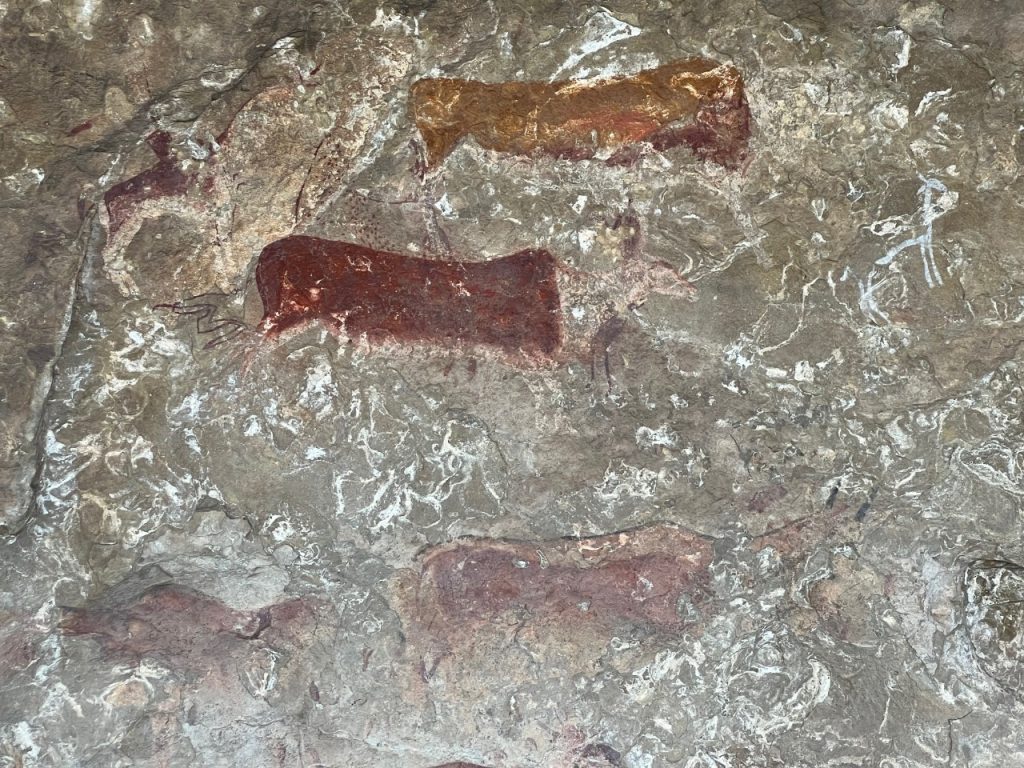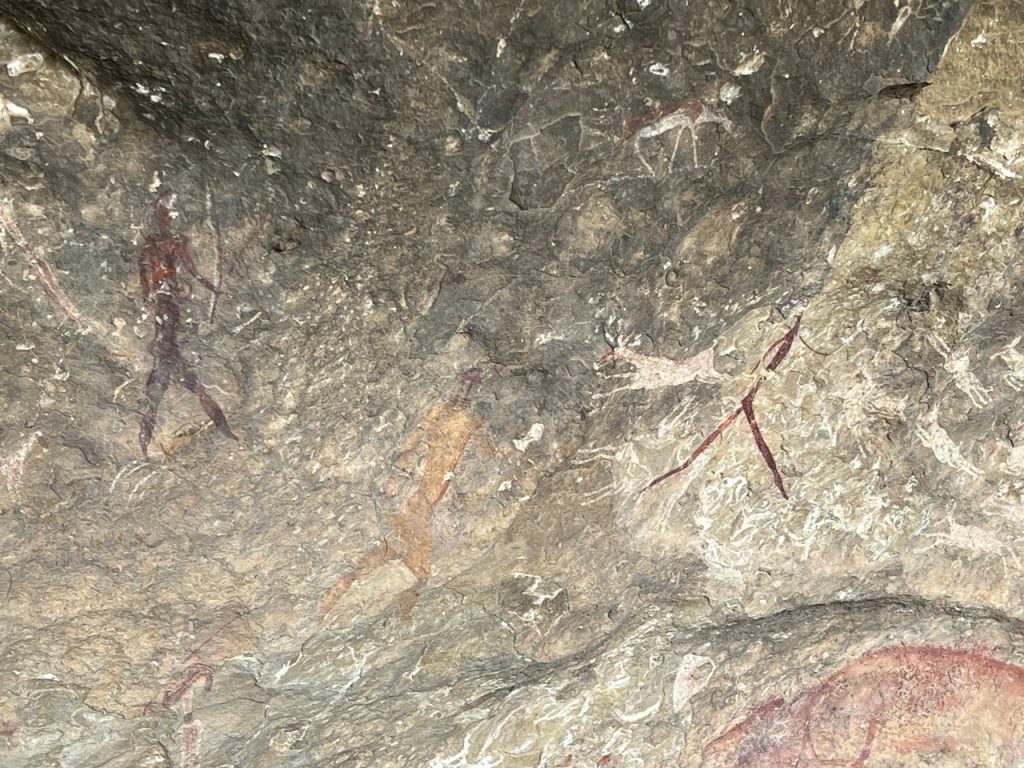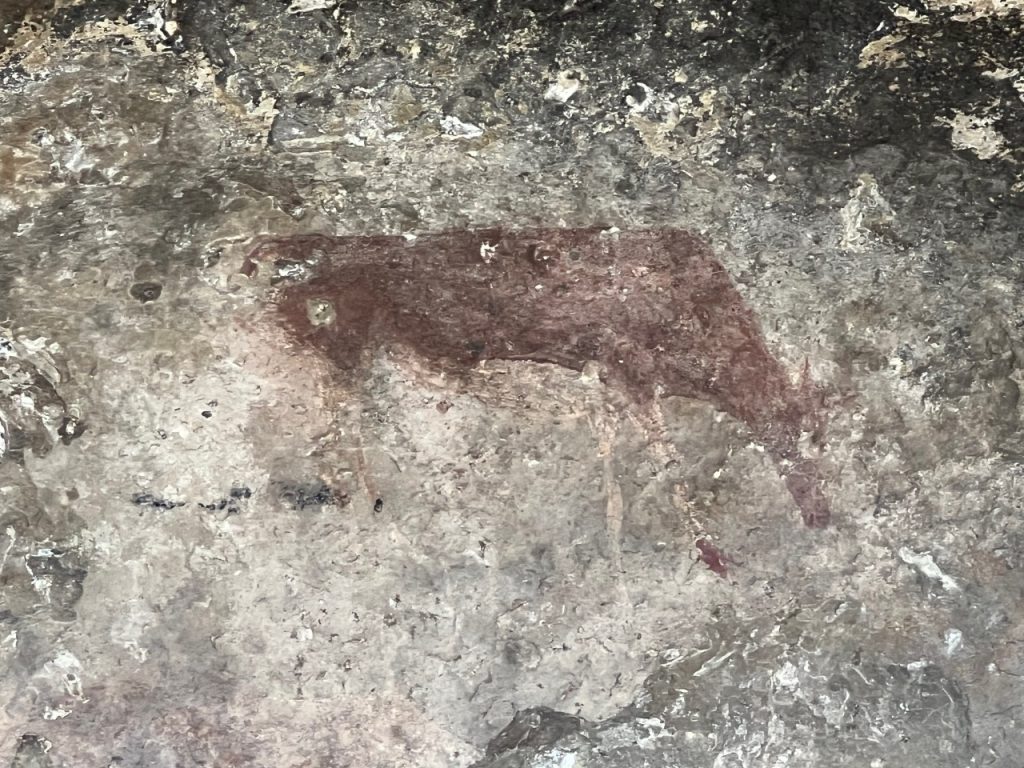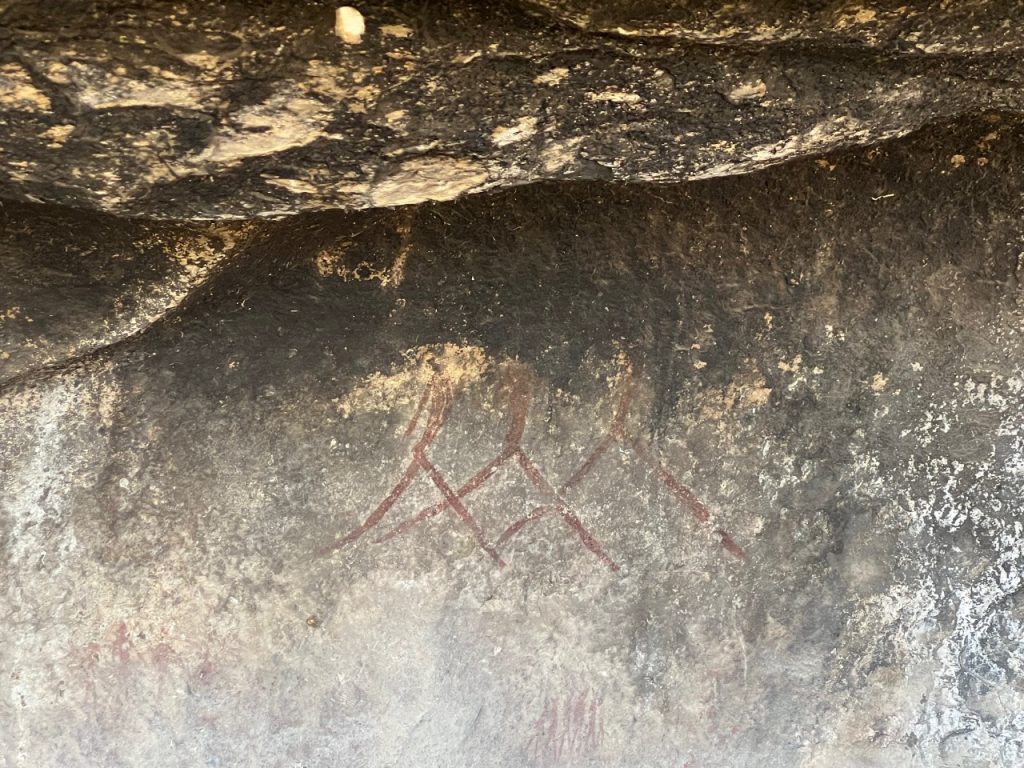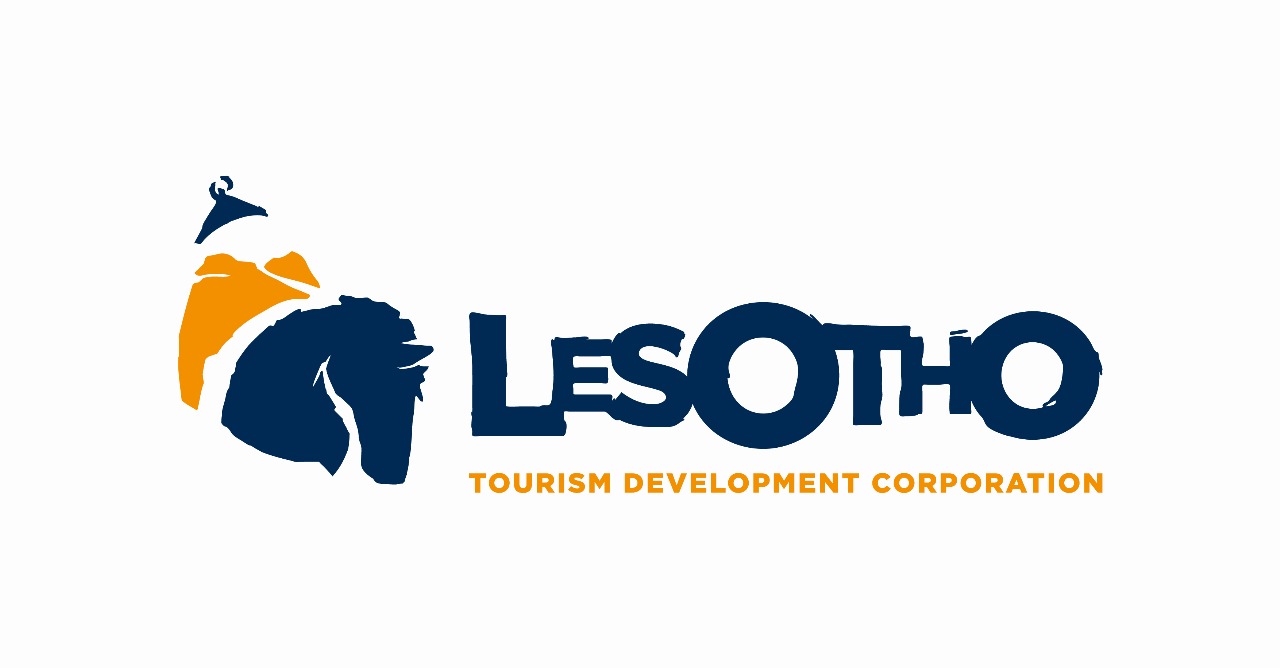- Home
- Explore Lesotho
Lesotho offers a wealth of attractions and activities for visitors seeking adventure, culture, or tranquillity.
Lesotho Highlands Water Project
The Lesotho Highlands Water Project (LHWP) is one of Africa’s largest and most ambitious infrastructure projects, designed to harness Lesotho’s abundant water resources to benefit both Lesotho and South Africa. Initiated in 1986 as a collaboration between the two countries, the project channels Lesotho’s mountain water to South Africa’s Gauteng Province while generating hydroelectric power for Lesotho. The LHWP is not only a marvel of engineering but also a vital contributor to Lesotho’s economy and energy independence.
Situated in the Maluti Mountains, the LHWP capitalizes on Lesotho’s high-altitude terrain and network of rivers, including the Senqu (Orange) River. The project features a series of interconnected dams, reservoirs, tunnels, and hydroelectric power stations. The first two phases of the project have been completed, with additional phases underway, including the construction of the Polihali Dam. These developments aim to increase water transfer capacity and generate additional electricity, ensuring that both countries reap long-term benefits.
Beyond its engineering achievements, the LHWP has transformed local communities by creating jobs, improving infrastructure, and supporting environmental conservation programs. However, the project also highlights the importance of sustainable development, as efforts are made to balance economic benefits with the preservation of Lesotho’s fragile ecosystems. Visitors to the project’s key sites can witness firsthand how Lesotho has harnessed its natural resources to drive progress while preserving its unique highland environment.
The LHWP has become a popular destination for travelers interested in both its technical brilliance and the natural beauty of its settings. The dams and reservoirs offer breathtaking views, opportunities for fishing and boating, and guided tours that provide insights into the project’s history and operations.
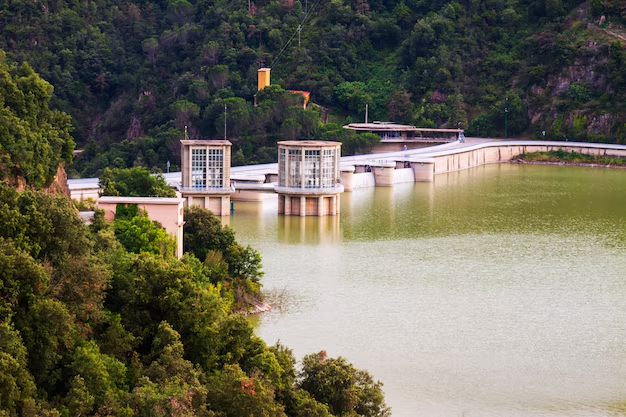
Katse Dam
Katse Dam, located at an altitude of 2,000 meters (6,562 feet), is the crown jewel of the Lesotho Highlands Water Project and one of the largest double-curvature concrete arch dams in Africa. Positioned approximately 190 km (118 miles) from Maseru, Katse Dam stands at an impressive height of 185 meters (607 feet). The dam creates a vast reservoir surrounded by dramatic mountain landscapes, offering visitors breathtaking views and a sense of awe at the scale of its construction. It plays a pivotal role in transferring water to South Africa while also providing hydroelectric power for Lesotho.
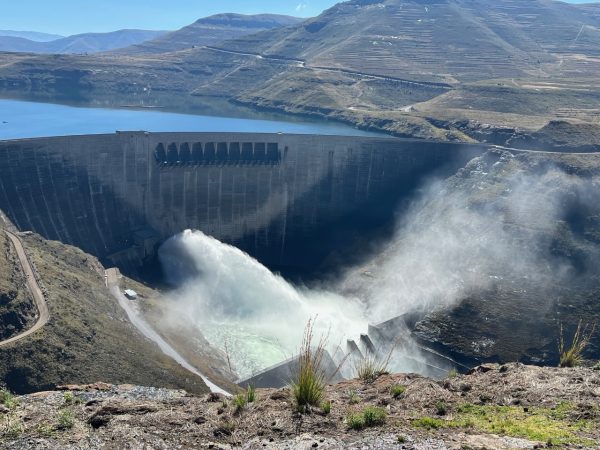
Katse Dam has become a major tourist attraction in Lesotho. Guided tours are available for visitors to explore the dam’s engineering features, including its intricate tunnel system and water transfer infrastructure. The dam’s reservoir supports a variety of recreational activities such as boating, kayaking, and fishing, allowing visitors to immerse themselves in the scenic surroundings. Photographers are drawn to the reservoir’s deep blue waters and panoramic mountain vistas, particularly at sunrise and sunset.
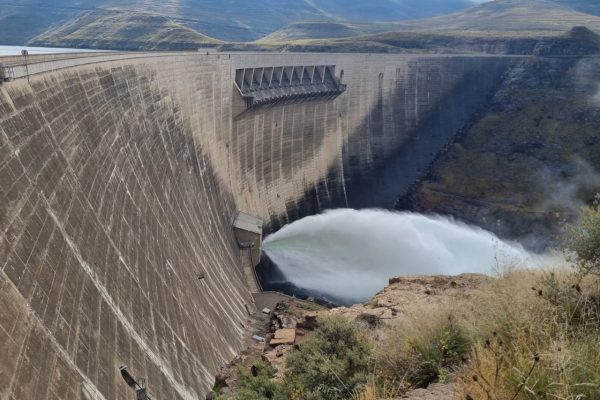
Nearby, the Katse Botanical Gardens add another layer of appeal. Established during the dam’s construction to preserve Lesotho’s indigenous plants, the gardens now offer a tranquil retreat where visitors can learn about high-altitude flora and enjoy peaceful walks. For those seeking adventure, hiking trails in the surrounding mountains provide stunning views of the reservoir and the Maluti range. Katse Dam combines engineering brilliance with natural beauty, making it an essential stop for both leisure travelers and nature enthusiasts.
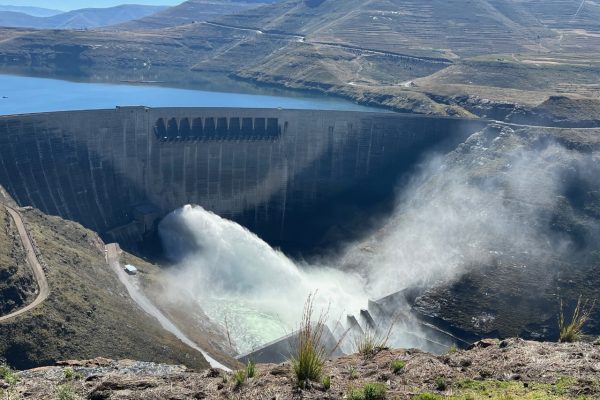
Mohale Dam
Located at an altitude of 1,975 meters (6,480 feet), Mohale Dam is a masterpiece of engineering and environmental harmony. Approximately 100 km (62 miles) from Maseru, the dam stands 145 meters (476 feet) tall and forms a critical part of the LHWP by acting as a secondary reservoir that transfers water to Katse Dam via an underground tunnel. The curved, concrete-faced rockfill design of the dam is not only visually striking but also designed to withstand the unique challenges of its mountainous location.
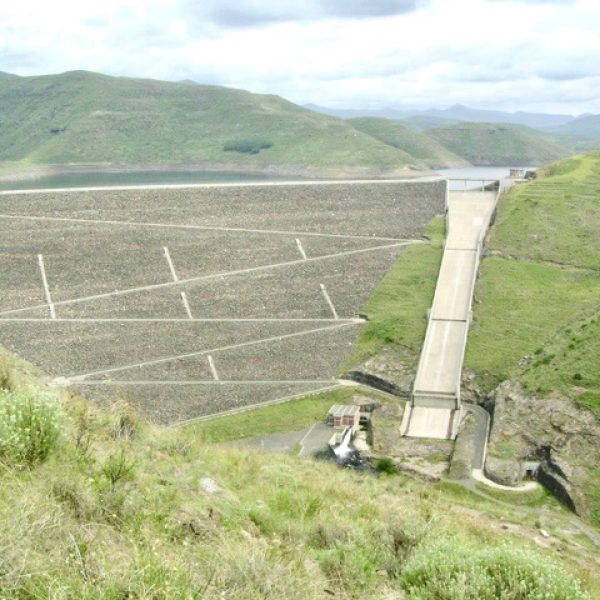
Mohale Dam is surrounded by pristine natural beauty, making it an increasingly popular destination for eco-tourists. Its calm waters are ideal for canoeing, kayaking, and fishing, offering a tranquil experience for visitors. The surrounding hills and valleys are perfect for picnics, photography, and short hikes, providing breathtaking views of the dam and the reservoir. Guided tours are available to provide insights into the dam’s operation and its environmental significance, offering a deeper appreciation of its role in Lesotho’s water management system.
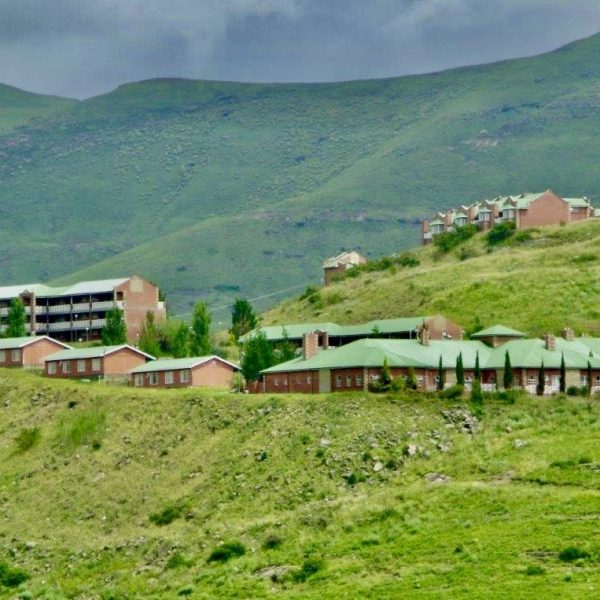
For those interested in cultural experiences, the villages near Mohale Dam provide opportunities to connect with the Basotho people and learn about their traditions. Visitors can also enjoy horse-riding excursions, a staple of Lesotho’s tourism, which offer unique perspectives of the dam and its surroundings. Mohale Dam’s combination of outdoor activities, cultural interactions, and engineering marvels makes it an appealing destination for a diverse range of travelers.

Polihali Dam
Polihali Dam, currently under construction as part of Phase II of the LHWP, is set to be another monumental addition to Lesotho’s water management infrastructure. Situated in the remote Mokhotlong District, approximately 240 km (149 miles) from Maseru, the dam will rise to a height of 165 meters (541 feet). It will create a massive reservoir that will flood the valleys of the Senqu and Khubelu rivers, dramatically altering the landscape while further boosting Lesotho’s water transfer capacity.
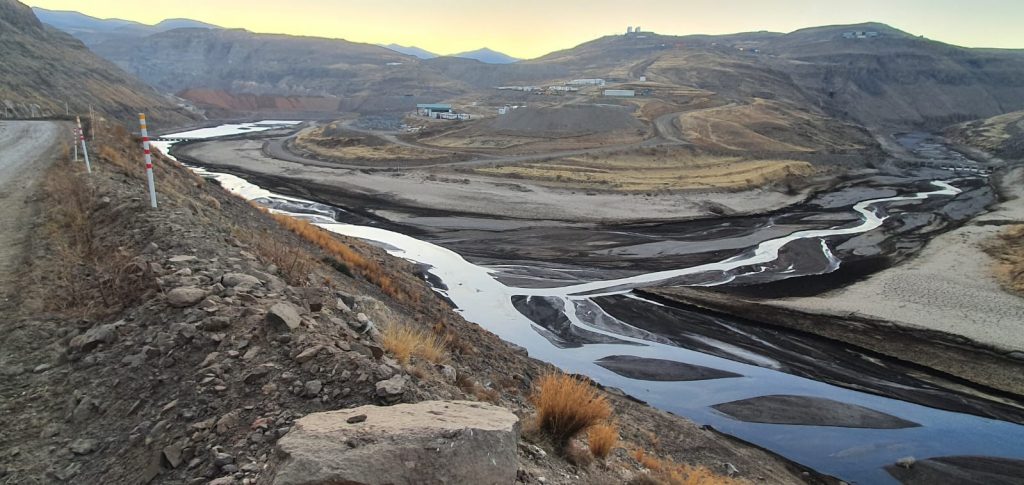
While still under construction, the Polihali site is already drawing interest for its potential as a future tourism hotspot. Once completed, the reservoir will offer a range of water-based activities such as fishing, boating, and kayaking. The surrounding area, known for its rugged and untouched beauty, is ideal for hiking and horseback riding. Visitors will be able to explore the Mokhotlong highlands, which feature deep valleys, rolling hills, and traditional villages that offer a glimpse into rural Basotho life.
The development of Polihali Dam also promises to bring economic growth to the region through improved infrastructure and increased tourism potential. Guided tours of the construction site are already available for those interested in engineering and environmental conservation. Polihali Dam is poised to become a key attraction in Lesotho, combining cutting- edge water management technology with the natural and cultural richness of the highlands.
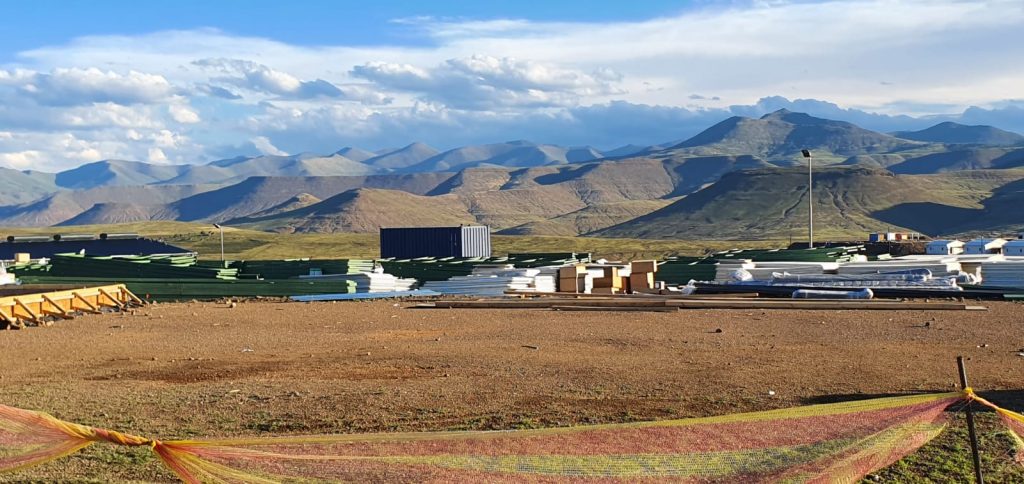
National Parks and Nature Reserves
Sehlabathebe National Park: A UNESCO World Heritage Site with grasslands and unique flora.
Tucked away in the remote southeastern highlands of Lesotho, Sehlabathebe National Park is a place of breathtaking beauty and cultural significance. Covering an area of 6,500 hectares (16,062 acres), the park is part of the Maloti-Drakensberg Transfrontier Conservation Area and is a designated UNESCO World Heritage Site. Situated at an altitude of 2,400 meters (7,874 feet) above sea level, Sehlabathebe offers sweeping grasslands, unique sandstone formations, and serene highland wetlands, making it a haven for nature lovers and adventure seekers alike.
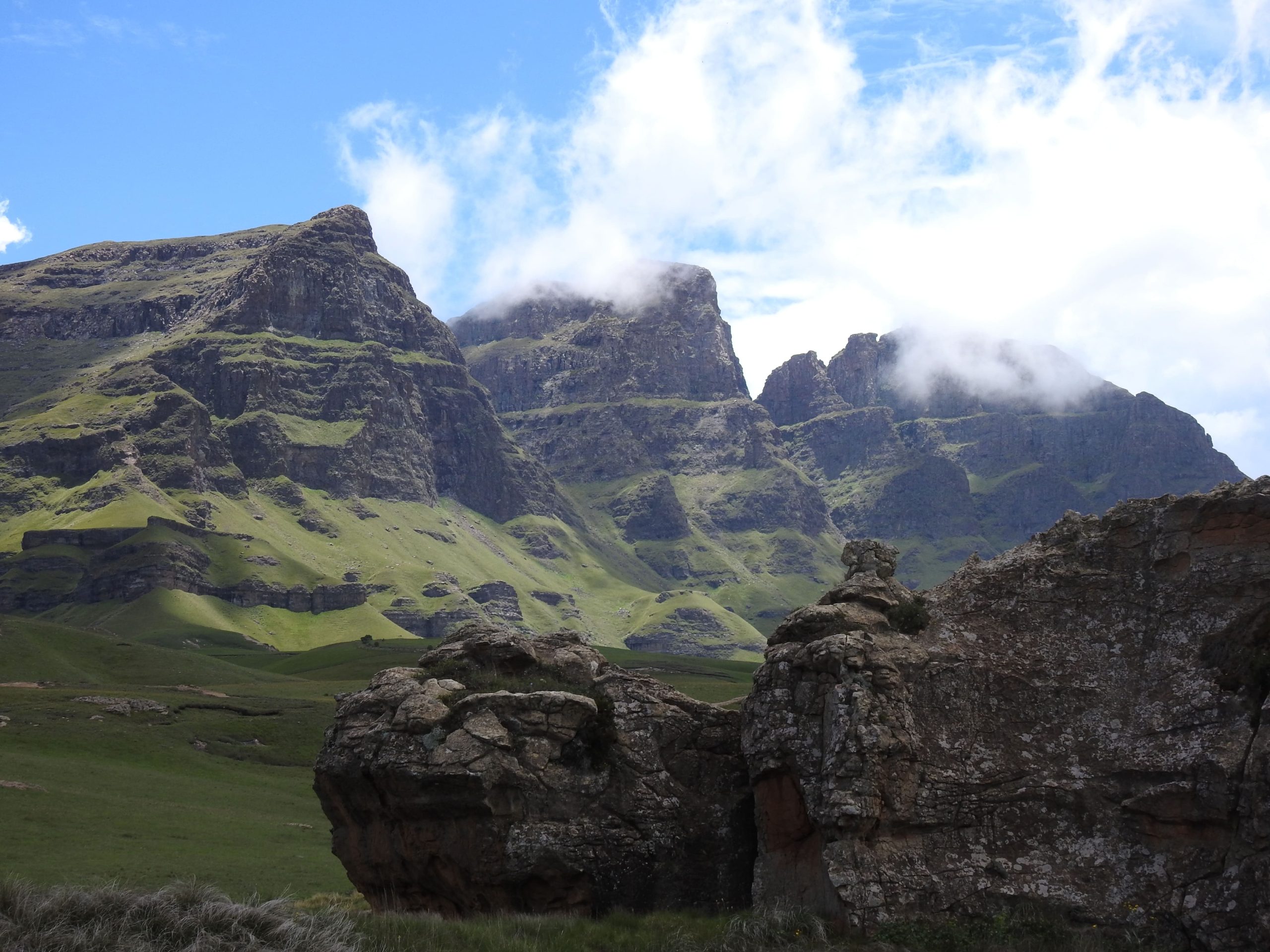
Heritage Significance & Conservation Management
Located in Lesotho’s Qacha’s Nek District at an elevation ranging from 2,200 to 2,600 m, Sehlabathebe National Park was established in 1969, making it the nation’s oldest protected area. In 2013, it was formally inscribed as part of the Maloti–Drakensberg Transboundary World Heritage Site, jointly managed with South Africa’s uKhahlamba‑Drakensberg Park, and acknowledged for its breathtaking biodiversity and rich cultural heritage, including over 200 San rock-art sites. Sehlabathebe is owned by the Government of Lesotho and managed under the Ministry of Tourism, Environment & Culture, with active conservation and development oversight provided by the Lesotho Tourism Development Corporation (LTDC).
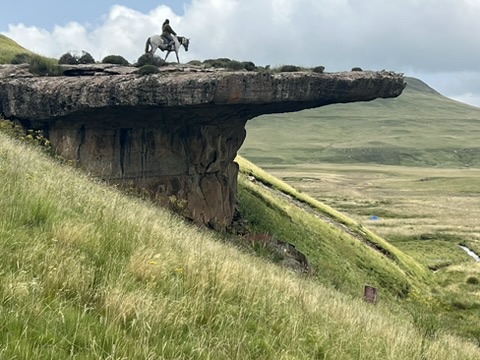
Heritage Significance & Conservation Management
Sehlabathebe spans around 6,500 ha of predominantly pristine wilderness—marked by rolling high-altitude grasslands, dramatic sandstone cliffs, seasonal wetlands, and cascading waterways, including the iconic Tsoelikana Falls. The park is a crucial water catchment area, replenishing rivers that flow into Lesotho, South Africa, and even Namibia. Weather here is unpredictable: summer (Oct–Mar) brings lush green landscapes with afternoon rain, while winter (May–Sept) is dry and often snowy, making it essential for visitors to pack layers and sturdy footwear.
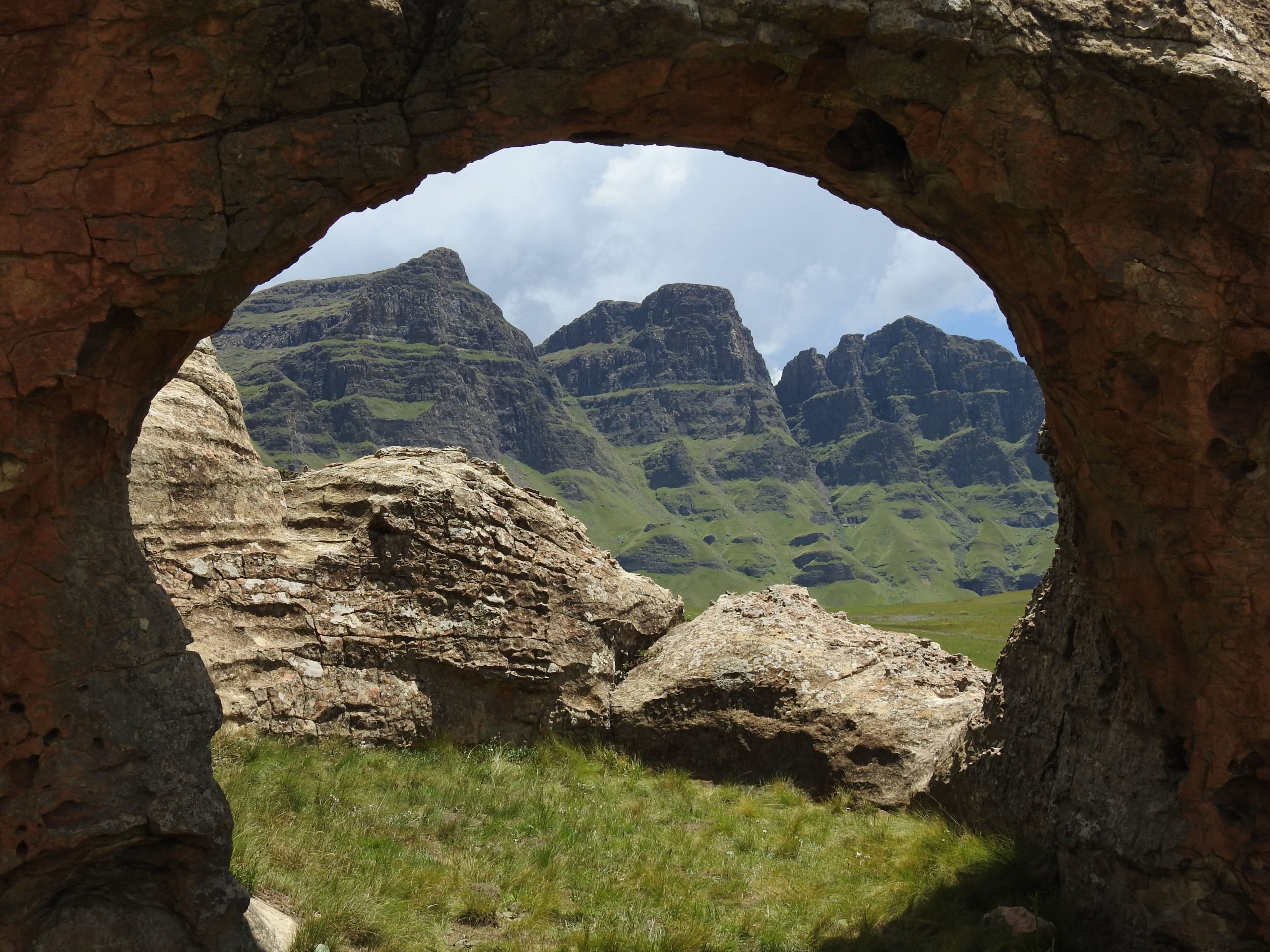
Heritage Significance & Conservation Management
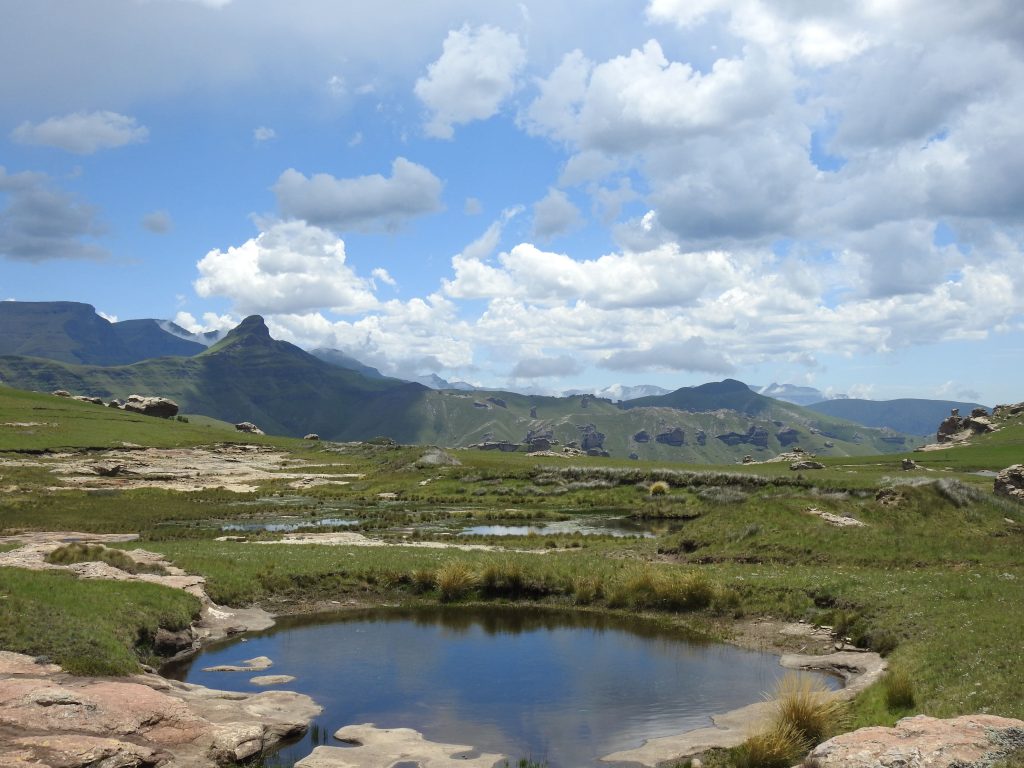
Visitor Experience & Access
Access to Sehlabathebe is an adventure: reached via approximately 290 km or 7 hours by road from Maseru, it is best approached by 4×4 vehicle, guided horseback tour, or on foot through routes like Bushman’s Nek or Mavuka. The park has a modern self-catering lodge (about 18 rooms) and campsite with ablutions, managed by LTDC and local operators. Visitors can enjoy hiking, pony-trekking, trout fishing, rock art exploration, wildlife viewing, and guided cave camps. Minimal infrastructure ensures an authentic wilderness experience – so come prepared with supplies, camping gear, and a sense of adventure.
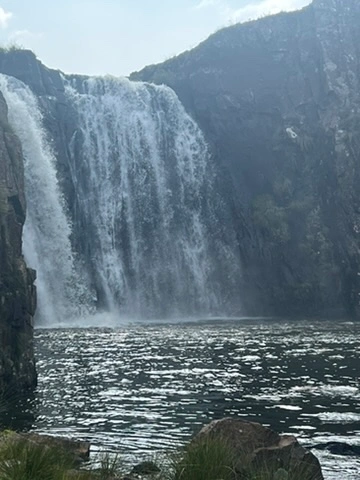
Ts'ehlanyane National Park: Home to lush forests and pristine mountain streams.
Nestled at the foothills of the Holomo Pass, Ts’ehlanyane National Park is Lesotho’s largest national park, covering 5,600 hectares (13,838 acres) of pristine wilderness. Located approximately 80 km (50 miles) from Maseru, the park is a haven for nature lovers, offering stunning vistas, lush indigenous forests, and crystal-clear mountain streams. The park’s high- altitude environment supports a rich diversity of flora and fauna, including rare sub-alpine plants and birds such as the endangered Bearded Vulture.
The park is ideal for outdoor enthusiasts, offering a variety of activities such as hiking, birdwatching, and trout fishing. Trails range from easy walks through the forest to more challenging treks that lead to breathtaking viewpoints. One of the highlights of the park is the Bokong Waterfall, a picturesque cascade surrounded by unspoiled natural beauty. For those seeking tranquillity, the serene rivers and dense woodlands provide a peaceful retreat away from the hustle of modern life.
Accommodation options within the park include the luxurious Maliba Lodge, a five-star eco- lodge that blends seamlessly with its natural surroundings. Visitors can enjoy guided tours, picnics by the river, or simply relax and take in the incredible scenery. Whether you’re an adventurer or a traveller seeking solitude, Ts’ehlanyane National Park offers an unforgettable experience in the heart of Lesotho’s highlands.
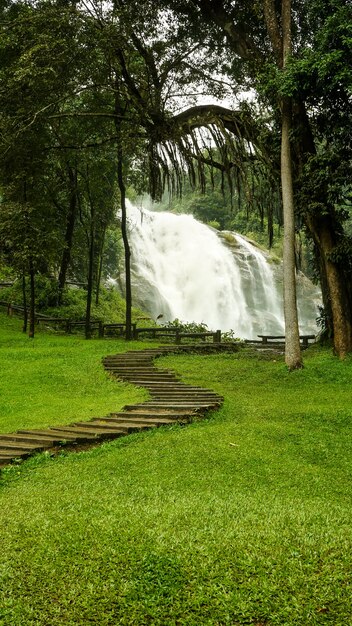
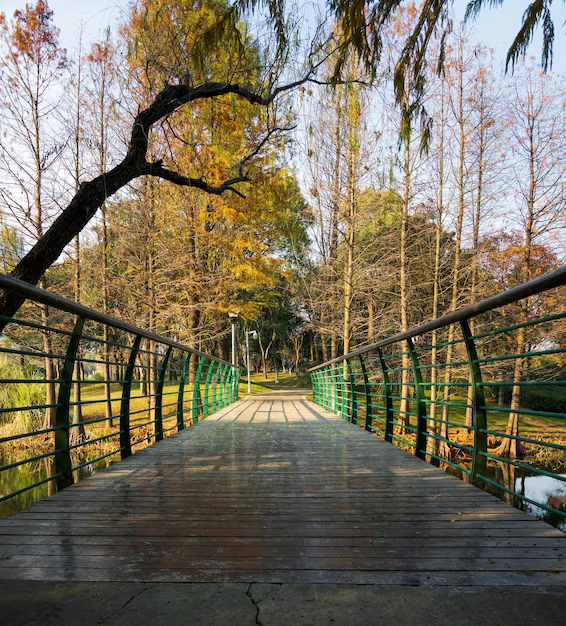


Bokong Nature Reserve: Features the stunning Lepaqoa Waterfall and high-altitude birdlife.
Perched high in the Maluti Mountains at an altitude of 3,090 meters (10,138 feet), Bokong Nature Reserve is a stunning destination that offers breathtaking views and a serene alpine atmosphere. Located along the road to Katse Dam, approximately 120 km (75 miles) from Maseru, the reserve is a favourite stop for travelers exploring Lesotho’s highlands. It is renowned for the Lepaqoa Waterfall, which freezes into dramatic icicles during the winter months, creating a unique and magical sight.
The reserve is a paradise for birdwatchers, with species such as the endangered Cape Vulture and other high-altitude birds commonly spotted in the area. Hiking enthusiasts will find trails that lead through dramatic landscapes of grasslands and rocky outcrops, offering incredible panoramic views of the surrounding mountains. The visitor centre, located at one of the highest points in the reserve, provides educational exhibits about the local environment and a stunning vantage point for photography.
Whether you’re passing through on your way to Katse Dam or planning a dedicated visit, Bokong Nature Reserve offers a tranquil retreat in Lesotho’s majestic highlands. Its unique combination of natural beauty, wildlife, and accessibility makes it a must-visit destination for travelers seeking an authentic experience in the Kingdom in the Sky.
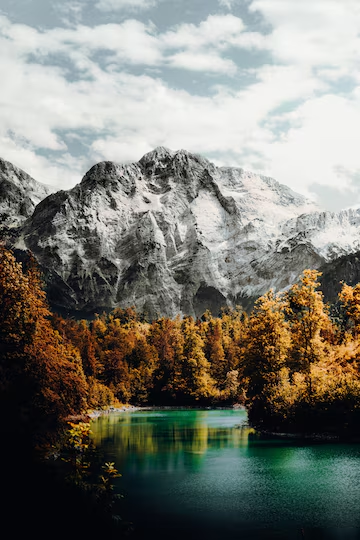
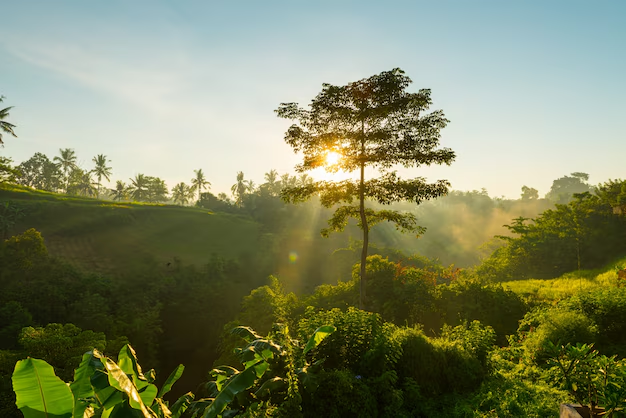


Cultural Landmarks and Museums
Thaba Bosiu: The historic stronghold of King Moshoeshoe I.
Thaba Bosiu, meaning “Mountain at Night,” is one of Lesotho’s most important historical and cultural landmarks. Located about 25 km (16 miles) southeast of Maseru, this sandstone plateau rises majestically above the surrounding plains. The mountain served as a stronghold for King Moshoeshoe I, the founder of the Basotho nation, in the 19th century. Its strategic location and natural defences made it an impregnable fortress, protecting the Basotho people from external threats during critical periods of their history.
Today, Thaba Bosiu is revered as a sacred site and is the burial ground of Lesotho’s kings and chiefs, including King Moshoeshoe I. The summit, accessible via a short but steep hike, offers not only panoramic views of the surrounding countryside but also a chance to visit the royal graves, which are marked with simple stone cairns. The site remains a symbol of Basotho unity and resilience, attracting visitors who wish to connect with the nation’s rich history.
At the base of the mountain lies the Thaba Bosiu Cultural Village, a living museum that brings Basotho traditions to life. The village features reconstructed thatched rondavels, exhibits on Basotho heritage, and performances of traditional music and dance. Visitors can also explore the amphitheatre, which hosts cultural events, and the visitor centre, where guides provide in- depth knowledge about the mountain’s significance. Thaba Bosiu is more than a historical site; it is a cultural hub that offers a profound understanding of Lesotho’s past and present.
Thaba Bosiu, meaning “Mountain at Night,” is one of Lesotho’s most important historical and cultural landmarks. Located about 25 km (16 miles) southeast of Maseru, this sandstone plateau rises majestically above the surrounding plains. The mountain served as a stronghold for King Moshoeshoe I, the founder of the Basotho nation, in the 19th century. Its strategic location and natural defences made it an impregnable fortress, protecting the Basotho people from external threats during critical periods of their history.

Today, Thaba Bosiu is revered as a sacred site and is the burial ground of Lesotho’s kings and chiefs, including King Moshoeshoe I. The summit, accessible via a short but steep hike, offers not only panoramic views of the surrounding countryside but also a chance to visit the royal graves, which are marked with simple stone cairns. The site remains a symbol of Basotho unity and resilience, attracting visitors who wish to connect with the nation’s rich history.

At the base of the mountain lies the Thaba Bosiu Cultural Village, a living museum that brings Basotho traditions to life. The village features reconstructed thatched rondavels, exhibits on Basotho heritage, and performances of traditional music and dance. Visitors can also explore the amphitheatre, which hosts cultural events, and the visitor centre, where guides provide in- depth knowledge about the mountain’s significance. Thaba Bosiu is more than a historical site; it is a cultural hub that offers a profound understanding of Lesotho’s past and present.

Morija Museum & Archives
The Thaba Bosiu Cultural Village is a premier cultural and heritage site in Lesotho, located at the base of the historic Thaba Bosiu plateau, approximately 24 km east of Maseru. Designed as a living museum, the centre was established to preserve and showcase Basotho history, traditions, and heritage. It serves as an important tourism and educational hub, offering visitors an immersive experience into the Basotho way of life, from past to present.
The Cultural Centre features a museum, which houses artifacts, historical exhibits, and interactive displays detailing the history of King Moshoeshoe I, the founding of the Basotho nation, and the significance of Thaba Bosiu as a stronghold. Additionally, the site includes traditional Basotho huts, giving visitors a glimpse into the architecture and lifestyle of the Basotho people. The centre also hosts cultural performances, including traditional music, dances, and storytelling sessions.
For those seeking a deeper experience, the Thaba Bosiu Cultural Village provides guided tours, which include hikes to the summit of Thaba Bosiu, where the graves of King Moshoeshoe I and other Basotho monarchs are located. There is also an on-site restaurant serving authentic Basotho cuisine, as well as an arts and crafts market where local artisans sell handmade goods, such as Basotho blankets, pottery, and beadwork.
The cultural village is also a venue for conferences, workshops, and special events, making it a versatile destination for both leisure and business visitors. Its facilities include a conference centre, accommodation in a traditional yet modern lodge, and an amphitheater used for cultural and corporate events.
GPS Coordinates:
📍 29°19′53″S 27°40′27″E
The Thaba Bosiu Cultural Village stands as a symbol of national pride and is a must-visit destination for anyone looking to explore the rich cultural and historical heritage of Lesotho.
The Thaba Bosiu Cultural Village is a premier cultural and heritage site in Lesotho, located at the base of the historic Thaba Bosiu plateau, approximately 24 km east of Maseru. Designed as a living museum, the centre was established to preserve and showcase Basotho history, traditions, and heritage. It serves as an important tourism and educational hub, offering visitors an immersive experience into the Basotho way of life, from past to present.

The Cultural Centre features a museum, which houses artifacts, historical exhibits, and interactive displays detailing the history of King Moshoeshoe I, the founding of the Basotho nation, and the significance of Thaba Bosiu as a stronghold. Additionally, the site includes traditional Basotho huts, giving visitors a glimpse into the architecture and lifestyle of the Basotho people. The centre also hosts cultural performances, including traditional music, dances, and storytelling sessions.

For those seeking a deeper experience, the Thaba Bosiu Cultural Village provides guided tours, which include hikes to the summit of Thaba Bosiu, where the graves of King Moshoeshoe I and other Basotho monarchs are located. There is also an on-site restaurant serving authentic Basotho cuisine, as well as an arts and crafts market where local artisans sell handmade goods, such as Basotho blankets, pottery, and beadwork.

The cultural village is also a venue for conferences, workshops, and special events, making it a versatile destination for both leisure and business visitors. Its facilities include a conference centre, accommodation in a traditional yet modern lodge, and an amphitheater used for cultural and corporate events.
GPS Coordinates:
📍 29°19′53″S 27°40′27″E
The Thaba Bosiu Cultural Village stands as a symbol of national pride and is a must-visit destination for anyone looking to explore the rich cultural and historical heritage of Lesotho.

Lesotho Highlands
The Lesotho Highlands are a vast, rugged terrain characterized by soaring peaks, deep valleys, and dramatic escarpments. Driving through the highlands offers breathtaking views of winding roads flanked by steep cliffs, verdant pastures, and traditional Basotho villages nestled into the mountainsides. Visitors can expect gravel roads in remote areas and steep inclines, making a 4×4 vehicle essential for navigating the terrain. The highlands are a place where untouched nature and vibrant local culture coexist, offering a unique travel experience for adventure seekers.
As you ascend into the highlands, the landscape transforms into a mosaic of rock-strewn slopes, alpine grasslands, and meandering streams. The remoteness of the region allows for encounters with shepherds tending their livestock and the chance to experience the tranquility of an untouched wilderness. With fewer modern amenities in these areas, travelers are encouraged to plan ahead and embrace the simplicity and raw beauty that define the Lesotho Highlands.
Sani Pass
The Sani Pass, a spectacular mountain pass connecting South Africa to Lesotho, is one of the most iconic gateways into the Kingdom in the Sky. Situated in the southern Drakensberg region, the pass begins near the town of Underberg in South Africa and climbs to an altitude of 2,876 meters (9,436 feet) at the Lesotho border. The route is a breathtaking yet challenging drive, with hairpin bends and steep gradients offering incredible panoramic views of the surrounding mountains and valleys. Often referred to as a 4×4 enthusiast’s dream, the Sani Pass is a must- experience journey for adventure seekers.
For travelers entering Lesotho, the Sani Pass serves as a scenic and adventurous entry point. Visitors will pass through the South African border post at the base of the pass and ascend the rugged terrain to the Lesotho border post at the summit. From there, the journey continues into Lesotho’s highlands, where travelers are greeted by picturesque landscapes and traditional Basotho villages. The pass is especially popular for those heading to Mokhotlong or exploring the Maloti Mountains.
The Sani Pass is also famous for its unique attractions, such as the Sani Mountain Lodge, home to the highest pub in Africa. Visitors can stop here to enjoy a warm meal, traditional Basotho hospitality, and unparalleled views of the surrounding peaks. Activities in the area include hiking, birdwatching, and photography, making the Sani Pass a destination in its own right. During the winter months, the pass often receives snow, adding a magical touch to the already stunning scenery.
While the Sani Pass offers an unforgettable experience, travelers should be well-prepared for the journey. A 4×4 vehicle is required to navigate the rugged terrain, and drivers should check weather conditions before embarking, as the pass can become treacherous during heavy rain or snow. Whether traveling from South Africa into Lesotho or vice versa, the Sani Pass promises a thrilling adventure and an introduction to the awe-inspiring beauty of the region.
Moteng Pass
Moteng Pass is one of Lesotho’s most breathtaking mountain passes, offering dramatic views and a thrilling drive through the Maluti Mountains. Located in the Butha-Buthe District, the pass rises to an altitude of approximately 2,820 meters (9,252 feet) above sea level and serves as a gateway to the remote Mokhotlong District. It is part of the A1 Road that connects Butha- Buthe to Mokhotlong and is a key access route to Afri-ski Mountain Resort, Lesotho’s premier winter sports destination. The pass features steep gradients, sharp turns, and occasional snowfall in winter, making it a challenging yet rewarding route for adventurers and experienced drivers.
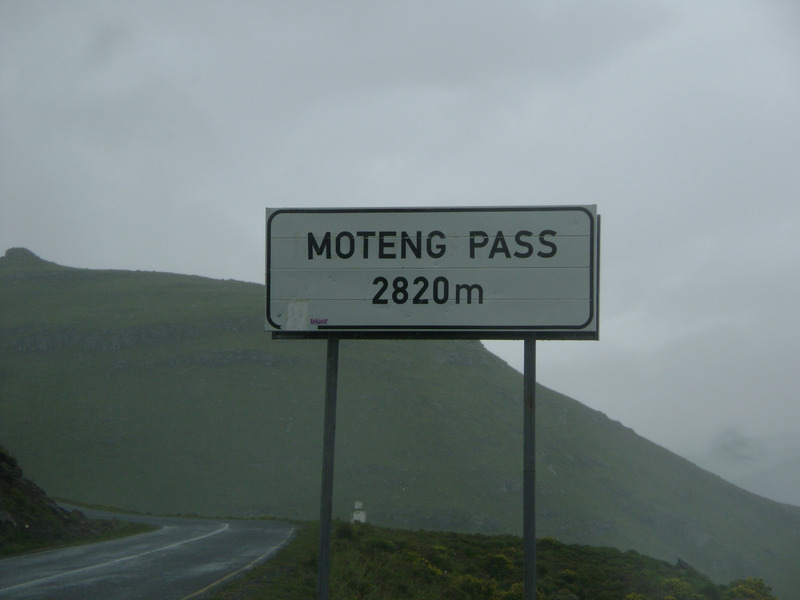
Travelers passing through Moteng Pass can enjoy unparalleled views of deep valleys, towering cliffs, and traditional Basotho villages scattered along the mountainsides. The route is popular among cyclists, hikers, and off-road enthusiasts seeking an authentic highland experience. However, due to the pass’s high altitude and unpredictable weather conditions, it is advisable to travel with a sturdy 4×4 vehicle and be prepared for sudden temperature drops, especially in winter.
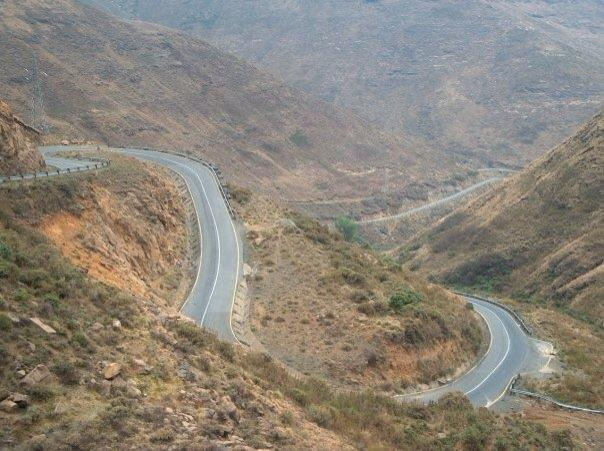
Molimo Nthuse Pass
Molimo Nthuse Pass is another iconic mountain pass in Lesotho, located along the Maseru – Thaba Tseka road. Named after the Basotho phrase meaning “God Help Me,” the pass reaches an altitude of approximately 2,370 meters (7,776 feet) and is known for its breathtaking views and winding roads that cut through the highlands. It is one of the main access routes to Thaba- Tseka District and the scenic Katse Dam, making it an important route for travelers exploring Lesotho’s interior.

The pass is surrounded by rugged terrain, rolling green hills, and picturesque waterfalls that appear after heavy rains. It is a favourite among road-trippers and motorcyclists due to its exhilarating hairpin bends and steep descents. The area is also rich in cultural history, with nearby villages offering a glimpse into the traditional Basotho way of life. Travelers are advised to take their time when navigating Molimo Nthuse Pass, as its sharp curves and changing elevations require careful driving, especially during wet or icy conditions.

Mafika Lisiu Pass
Spectacular High‑Altitude Route
The Mafika Lisiu Pass, situated in the Leribe District, is a stunning high-mountain drive that ascends from around 2,038 m at the start to a lofty summit of 3,090 m, with a total climb of 1,052 m over approximately 10.6 km—classified as a challenging ‘HC’ climb for cyclists and drivers alike. This scenic pass was built in the 1990s to support Katse Dam construction and even earned an international engineering award for its bold and innovative design—balancing steep gradients, tight hairpins, and sweeping turns.
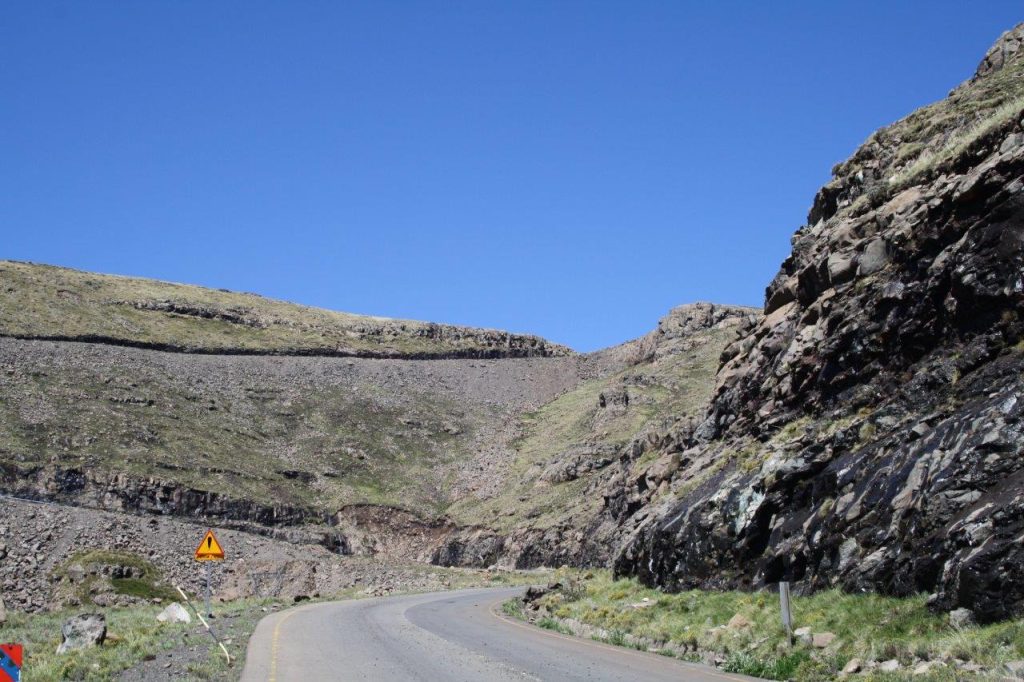
Dramatic Scenery & Geological Features
Winding atop rugged Lesotho highlands, Mafika Lisiu offers breathtaking panoramas of deep valleys, rocky gorges, cascading streams, and plunging waterfalls – a photographer’s dream. A major highlight is the well-constructed summit viewpoint around the 12 km mark, where motorists and cyclists can stop safely to admire the vast Maloti Mountain expanse and sweeping western vistas.
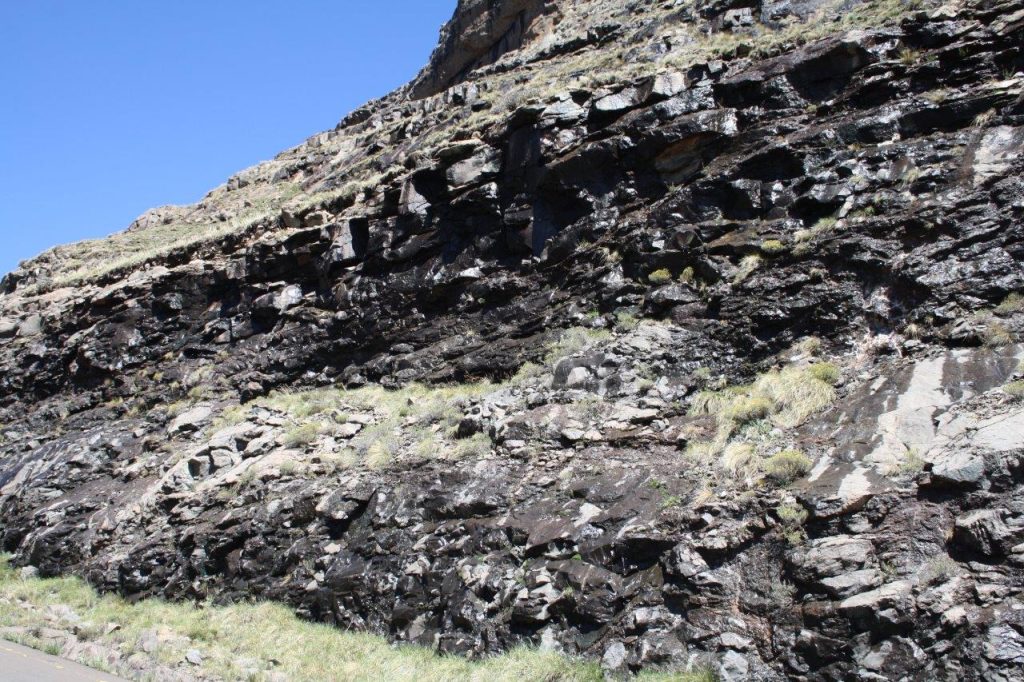
Weather & Road Challenges
The pass experiences frequent snowfall and black ice in colder months, meaning 4×4 vehicles are strongly recommended for safe travel. Drivers should be cautious of sudden rockfalls, steep curves, and hairpin bends that can challenge even experienced navigators—road signage warns of brake failure and sharp descents. During summer, late-afternoon showers may result in slick roads and reduced visibility, so travellers are encouraged to check real-time weather before heading out.
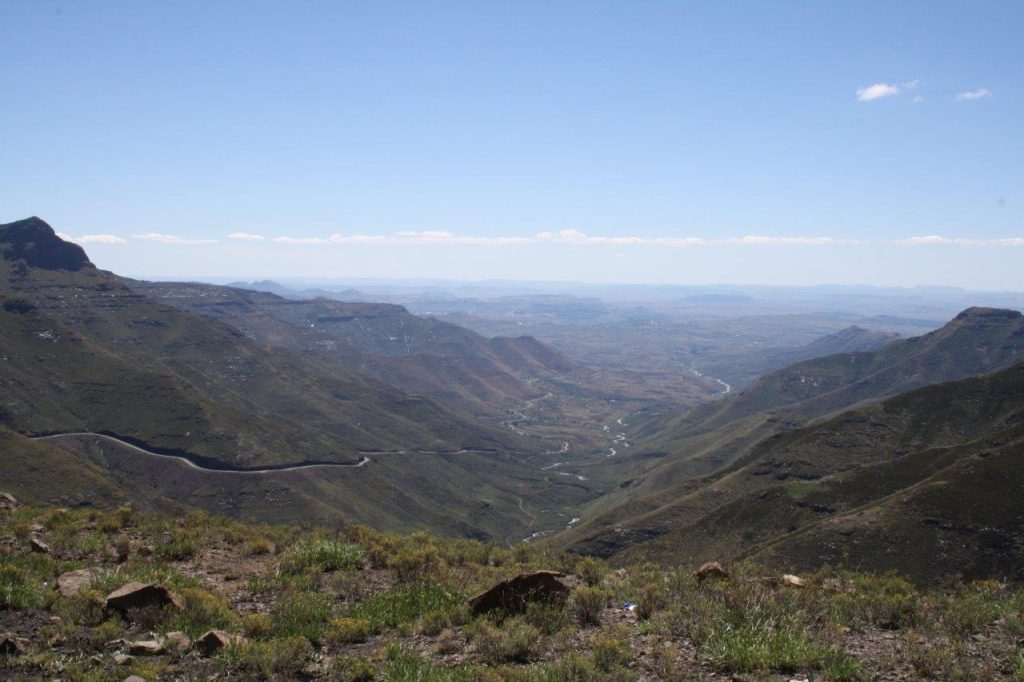
Visitor Experience & Access
The pass lies along the A25 road and is best driven from Maseru via Teyateyaneng and Bokong Nature Reserve, which is located just below the summit at around 3,090 m. The reserve offers nearby attractions like the Lekaqoa (Lepaqoa) Waterfall and educational visitor centre. Adventurous travellers can explore on foot, by 4×4, or by bike – cycling the climb is a renowned challenge due to its steep average gradient of 9.7 % and scenic rewards. The route also provides access to community homesteads in Ha Lejone and can be combined with visits to Katse Dam and other nearby attractions.
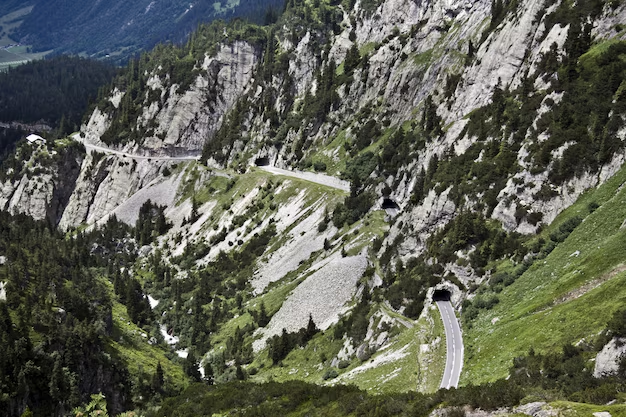
Tour Guides
Enhance your visit with expert guidance from Lesotho’s knowledgeable tour operators
Certified Local Guides: Explore Lesotho’s treasures with professionals who provide historical insights, local stories, and cultural understanding
Lorem Ipsum is simply dummy text of the printing and typesetting industry. Lorem Ipsum has been the industry’s standard dummy text ever since the 1500s, when an unknown printer took a galley of type and scrambled it to make a type specimen book. It has survived not only five centuries, but also the leap into electronic typesetting, remaining essentially unchanged. It was popularised in the 1960s with the release of Letraset sheets containing Lorem Ipsum passages, and more recently with desktop publishing software like Aldus PageMaker including versions of Lorem Ipsum.
Lorem Ipsum is simply dummy text of the printing and typesetting industry. Lorem Ipsum has been the industry’s standard dummy text ever since the 1500s, when an unknown printer took a galley of type and scrambled it to make a type specimen book. It has survived not only five centuries, but also the leap into electronic typesetting, remaining essentially unchanged. It was popularised in the 1960s with the release of Letraset sheets containing Lorem Ipsum passages, and more recently with desktop publishing software like Aldus PageMaker including versions of Lorem Ipsum.
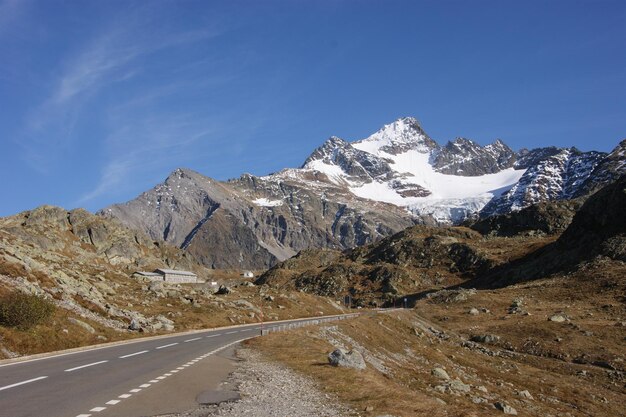
Specialized Tours: Book a tailored experience, such as a photography- focused tour of the highlands or a culinary journey through Basotho cuisine.
Lorem Ipsum is simply dummy text of the printing and typesetting industry. Lorem Ipsum has been the industry’s standard dummy text ever since the 1500s, when an unknown printer took a galley of type and scrambled it to make a type specimen book. It has survived not only five centuries, but also the leap into electronic typesetting, remaining essentially unchanged. It was popularised in the 1960s with the release of Letraset sheets containing Lorem Ipsum passages, and more recently with desktop publishing software like Aldus PageMaker including versions of Lorem Ipsum.
Lorem Ipsum is simply dummy text of the printing and typesetting industry. Lorem Ipsum has been the industry’s standard dummy text ever since the 1500s, when an unknown printer took a galley of type and scrambled it to make a type specimen book. It has survived not only five centuries, but also the leap into electronic typesetting, remaining essentially unchanged. It was popularised in the 1960s with the release of Letraset sheets containing Lorem Ipsum passages, and more recently with desktop publishing software like Aldus PageMaker including versions of Lorem Ipsum.

Contact Information: Easily find trusted tour operators in our directory, complete with reviews and contact details.
Lorem Ipsum is simply dummy text of the printing and typesetting industry. Lorem Ipsum has been the industry’s standard dummy text ever since the 1500s, when an unknown printer took a galley of type and scrambled it to make a type specimen book. It has survived not only five centuries, but also the leap into electronic typesetting, remaining essentially unchanged. It was popularised in the 1960s with the release of Letraset sheets containing Lorem Ipsum passages, and more recently with desktop publishing software like Aldus PageMaker including versions of Lorem Ipsum.
Lorem Ipsum is simply dummy text of the printing and typesetting industry. Lorem Ipsum has been the industry’s standard dummy text ever since the 1500s, when an unknown printer took a galley of type and scrambled it to make a type specimen book. It has survived not only five centuries, but also the leap into electronic typesetting, remaining essentially unchanged. It was popularised in the 1960s with the release of Letraset sheets containing Lorem Ipsum passages, and more recently with desktop publishing software like Aldus PageMaker including versions of Lorem Ipsum.

Activities
Lesotho offers a wide range of activities that cater to adventure seekers, nature enthusiasts, and cultural explorers. From hiking through scenic mountain trails to enjoying winter sports at one of Africa’s few ski resorts, the Kingdom in the Sky promises unforgettable experiences. Visitors can immerse themselves in traditional Basotho culture, embark on thrilling outdoor adventures, or simply relax and take in the breathtaking landscapes.
Fishing in Lesotho
Lesotho offers exceptional freshwater angling set against dramatic highland scenery. Key trout fishing spots include mountain streams like the Bokong River, Maletsunyane River at Semongkong, Makhaleng River (near Molimo-Nthuse Lodge), and the Senqunyane River upstream of Marakabei Lodge. These chilly, crystal-clear waters teem with both rainbow and brown trout, along with yellowfish in larger systems such as the Bokong – making Lesotho a prime location for sight-fishing and trophy catches.
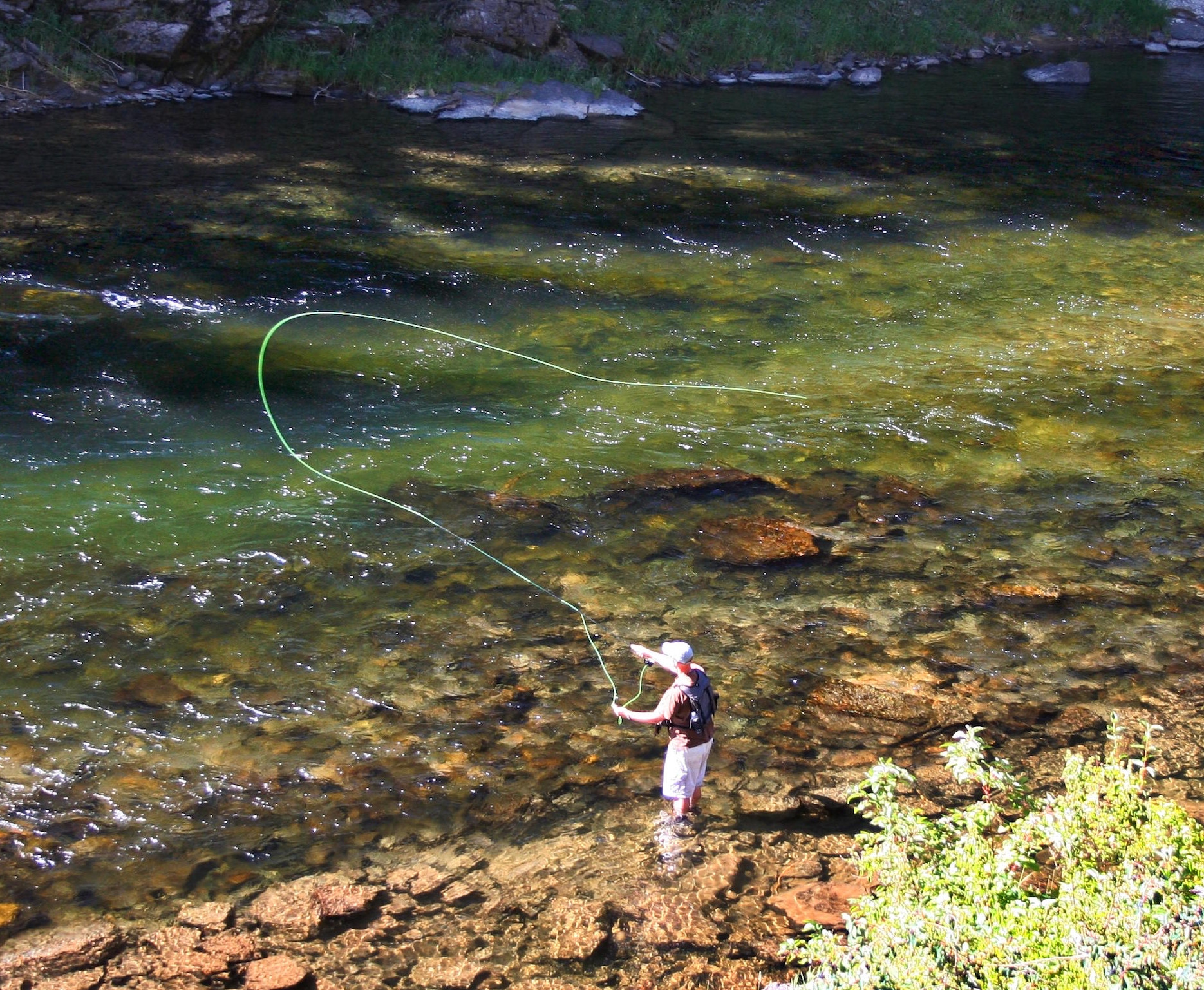
Seasons & Best Times to Fish
Trout season in Lesotho runs from September to the end of May, with the closed season in place from June 1 to August 31 to protect breeding stocks. The optimal fishing periods are early spring (Sept–Oct) and autumn (March–May), when water levels are ideal, and fish are most active. Rising, dry-fly fishing during late afternoon and early morning – especially in spring – can be particularly rewarding, with the mountainous backdrop adding to the unparalleled experience.

Rivers, Fish Species & Catch Regulations
The primary game fish include rainbow trout (Oncorhynchus mykiss), brown trout (Salmo trutta), and smallmouth yellowfish (Labeobarbus aeneus) in wider rivers such as the Bokong. Anglers might also spot endemic Maluti redfin (Pseudobarbus quathlambae) in protected zones – this delicate species is strictly protected and must not be caught. Trout fishing regulations emphasize sustainable practices: only rod-and-line with artificial flies or non-spinner tackle are allowed, and landing nets or gaffs are forbidden. A daily bag limit of 12 trout over 10 inches is enforced; all other trout must be returned.

Visitor Tips & Permitting
Catch-and-release fly-fishing is the norm – especially in remote highland stretches like those near Semongkong, where guides from Semongkong Lodge or local camps add local knowledge and logistical support. Day permits, available from lodgings like Semongkong or Bushman’s Nek, and local guides are not only supportive – they are essential for navigating private territory and conservation zones. Permit fees contribute directly to river upkeep via local conservation funds.
Whether you’re fly-fishing clear mountain streams for trout or chasing yellowfish in expansive highland rivers, Lesotho offers a rich, sustainable angling experience nestled within awe-inspiring landscapes.

Golf
Maseru Golf Club is a scenic 9-hole public golf course, conveniently located off the Maseru Bypass in the CBD, and serves as the headquarters of the Lesotho Golf Union.
The par‑36 layout stretches over approximately 3,335 yards and features well-maintained fairways, a putting green, a chipping area, a practice bunker, and a welcoming clubhouse bar – perfect for golfers of all skill levels.
Bookings and memberships. You can also book directly by contacting the club at +266 22321164 or maserugolfclub@gmail.com for green fees and membership information.
Whether you’re a casual visitor, business traveller, or passionate golfer, Maseru Golf Club offers a scenic escape in the heart of Maseru – with a friendly atmosphere that’s ideal for a relaxed round.



Hiking and pony trekking
Hiking in Lesotho offers adventure across rugged highland terrain – ranging from dramatic cliffs and cascading waterfalls to serene alpine valleys. To tackle these environments safely and comfortably, visitors should pack thoughtfully. Essentials include sturdy hiking boots, grippy trail shoes, moisture-wicking socks, a waterproof and windproof jacket, warm layering (like fleece and thermal underwear), a daypack with rain cover, trekking poles, hat, gloves, map (1:50 000) or GPS, sun protection (sunglasses and sunscreen), and a basic first-aid kit. For overnight trips, add a sturdy tent, sleeping bag rated for sub-zero, water purification, and sufficient food supplies. Many lodges, such as Sani Lodge or Semongkong Lodge, publish detailed “kit lists” tailored to local conditions—these are invaluable for first-time hikers.
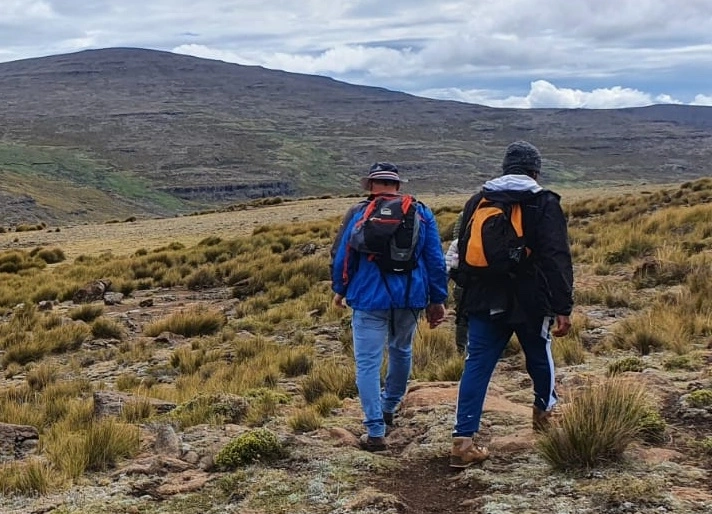
While Lesotho’s highlands are incredibly scenic, navigation can be tricky – there are no formal waymarked trails, only traditional pony and footpaths that wind through remote areas. Engaging a local Basotho guide is highly recommended. Guides offer intimate terrain knowledge, cultural context, and practical logistics – from liaising with village chiefs for permission to setting up camps alongside advice on safe routes and weather shifts. Route planning apps like Komoot, AllTrails, and Strava offer mapped hiking and cycling routes in Lesotho, but a local guide ensures a richer, safer adventure and helps preserve fragile mountain ecosystems.

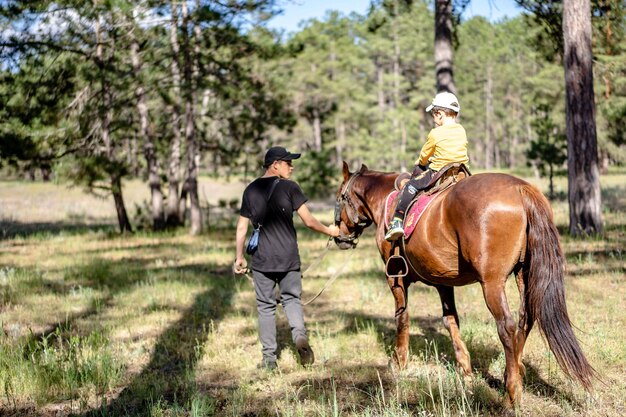
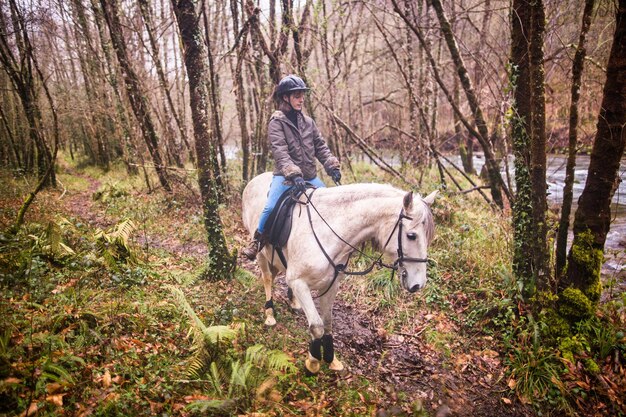
Off-road Cycling in Lesotho
Lesotho’s rugged Maloti‑Drakensberg highlands offer some of southern Africa’s most exhilarating off-road cycling experiences. Riders tackle a mix of steep gravel roads, rocky tracks, and winding passes that climb from 1,800 m to over 3,000 m, delivering both adrenaline rushes and jaw-dropping mountain vistas. Frequent highlights include steep ascents like Mafika Lisiu and Matebeng Pass, scenic river valleys, and the descent into Sani Pass, all traced along traditional pony paths and rural dirt routes.

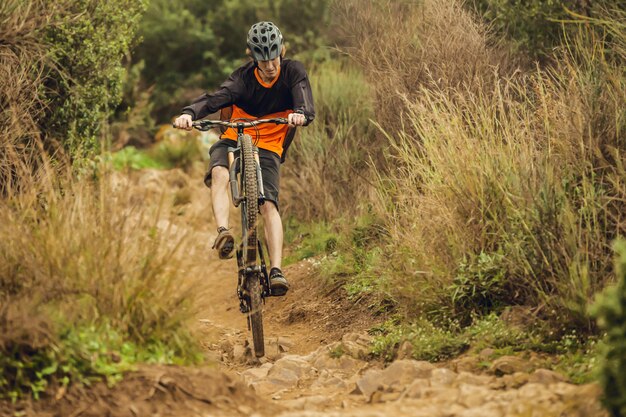
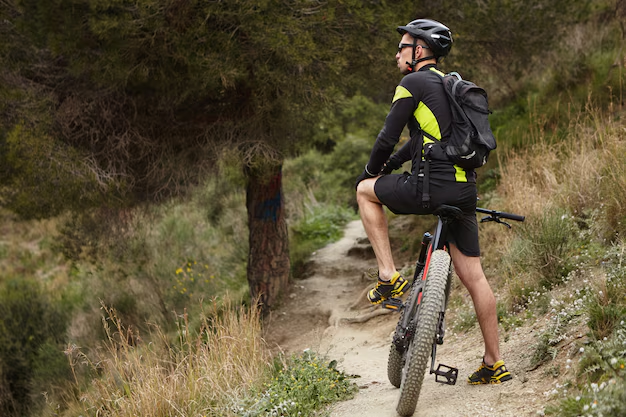
Guided multi‑day tours – such as Detour Trails’ Lesotho Highlands Adventure and Trans Lesotho – offer structured expeditions across bikepacker-friendly lodges, remote communities, and cultural hotspots from Afri-ski to Semongkong. Riders cover 400–500 km over 6–8 days, climb tens of thousands of vertical meters, and enjoy support vehicles, meals, and cultural immersions en route.

For independent cyclists, the Lesotho Traverse and similar routes link Maseru with the east‑west highlands, combining challenging terrain with village hospitality and wild camping under the stars. Regardless of the itinerary, essential gear includes grippy mountain bikes (with suspension and low gearing), extra water, warm waterproof layers, and navigational aids for unmarked terrain.

Longboarding in Lesotho
Lesotho’s smooth, winding mountain roads – especially around Mafika Lisiu Pass, Katse Dam, and the Maletsunyane Falls area – have established the country as a dream destination for ambitious longboard riders. Enthusiasts report runs of over 10 km of pristine downhill pavement, offering exhilarating speeds in spectacular high-altitude settings (over 3,000 m in places) with sweeping canyon views and minimal traffic. The consistent gradients and tight turns along remote passes make for a unique freeride experience – ideal for thrill-seekers looking to push their limits.
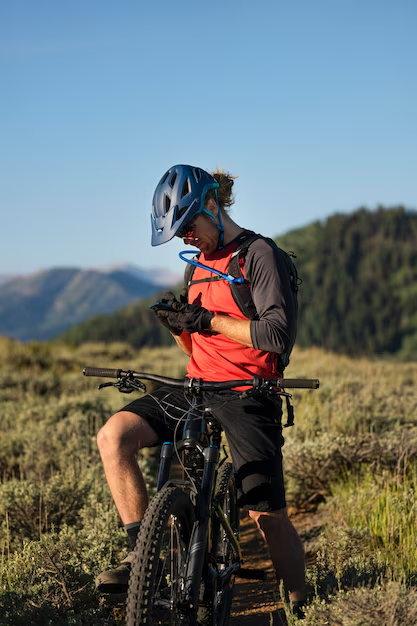
Regulations & Permissions
There are currently no formal permits or licenses required to longboard in Lesotho. That said, with longboarding still a niche activity in the region, it’s wise to seek permission from local authorities or landowners, particularly when accessing remote areas on community land. Additionally, always check in with village chiefs when riding through or near settlements – this fosters goodwill and ensures you remain respectful of local customs.
Risks & Safety Measures
Longboarding at altitude comes with serious risks – high speeds, steep drops, loose gravel, and potential wildlife or livestock in unexpected locations. Injury statistics from downhill longboarding worldwide show a high incidence of head, neck, and limb injuries. Riders are strongly advised to use full downhill safety gear: full-face helmet, gloves with slide pucks, knee and elbow pads, and even leather suits for high-speed runs. Emergency services in these remote areas are limited, so it’s essential to ride with a partner, carry a first-aid kit, and share your route with someone before setting off.
Thrilling Downhill Runs & Iconic Passes
Lesotho has become a premier destination for downhill longboarding enthusiasts, thanks to its impeccably smooth high-altitude mountain roadways. Notable runs include Mafika Lisiu Pass, the Katse Dam access road, and the serpentine roads near Marakabei and Maletsunyane Falls, offering up to 10 km of flawless pavement at elevations exceeding 3,000 m. The combination of steep gradients, tight corners, and breathtaking alpine scenery provides both beginners and seasoned riders a unique freeride and speed experience in what’s been described as “downhill heaven
Community Tours & Event Seasons
Enthusiasts from across southern Africa join Lesotho’s Downhill / Longboarding pilgrimages twice yearly – typically in March – April and August – September, aligning with cooler, dryer seasons and well-timed road conditions. Tours like the “#VATincreasetour” bring together riders to conquer passes like Mafika Lisiu, Black Tar (Ramabanta), and other once-remote descents, where asphalt quality and gradient variations push riders’ skills to the, quite literally, next level.
Water Sports
Lesotho’s rivers, reservoirs, and high-altitude wetlands provide excellent opportunities for fishing, rowing, and boating. The Katse and Mohale dams are popular spots for trout fishing, with their clear, cold waters offering ideal conditions for the sport. Rowing and kayaking are also enjoyed on these reservoirs, with scenic surroundings enhancing the experience. The Maletsunyane River near Semongkong is another excellent location for water-based activities, combining adventure with the tranquillity of Lesotho’s waterways.

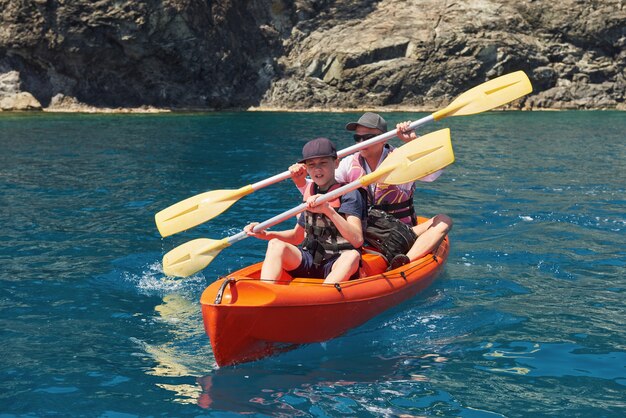
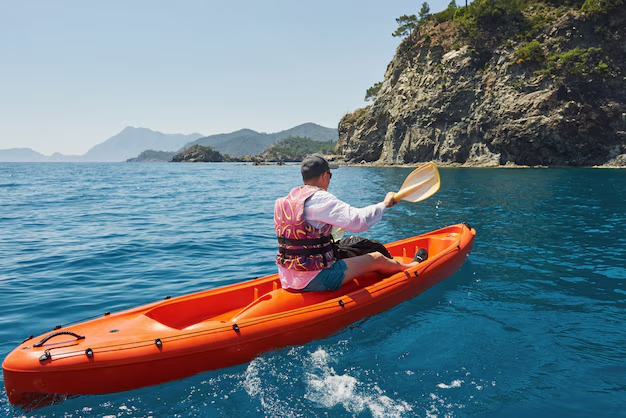
Rowing, Kayaking & Similar Sports
Lesotho’s high-altitude reservoirs created by the Lesotho Highlands Water Project – Katse, Mohale, and Polihali dams – offer superb venues for rowing, kayaking, canoeing, and small-boat sailing. At Katse Dam, calm open waters and dramatic cliffs make it ideal for paddle-sport enthusiasts. Additionally, the scenic waters of Mohale Dam offer serene routes among alpine landscapes, while the newly formed Polihali reservoir is also being explored by adventurous small-boat operators. Local adventure outfitters and tour operators can arrange boat rentals and guided kayak excursions, often combined with fishing or cultural village visits.

Regulations are in place to maintain safety and ecological standards. Boats must stay clear of dam structures, intake areas, and outlet tunnels. Most operators employ trained guides for navigation and safety briefings. Non-motorised activities are typically allowed year-round, though water levels can fluctuate depending on project requirements – visitors are urged to check conditions in advance. Permit compliance and insurance verification are mandatory when booking through licensed operators.

Motorised Water Sports
For visitors seeking a more adrenaline-fueled experience, motorised boating and powerboat sports are permitted on Lesotho’s larger LHWP dams – with clear restrictions. Engine-powered craft such as speedboats and jet-skis are allowed, but restricted to specific zones away from dam walls, infrastructure, and protected wetland areas. Though there’s no formal national regulation publicly published, paddlers and motor-boat users are advised to exercise caution: keep at least 60–120 m from swimmers or shorelines, adhere to local speed limits (approximately 5 knots in no-wake zones), and respect wildlife habitats.

Local adventure companies often provide motorised boat tours or water-skiing experiences on Katse Dam, ensuring all boats are safety-compliant with lifejackets, fire extinguishers, and communication radios. These excursions are typically scheduled in dry-season months (Sept–Apr) when water levels are stable and weather conditions are optimal. Visitors should ensure their operator complies with LHWP dam regulations and holds appropriate liability coverage.

| Tip | Details |
|---|---|
| Best Time | September–April (stable water levels; summer rainfall can make access roads slippery) |
| Essential Gear | Lifejackets, sun protection, waterproof dry bags |
| Booking | Through LTDC-approved operators or partner lodges—confirm dam access and guide support |
| Safety first | Always follow guide instructions—dam walls and intake zones can create strong undertows |
Winter sports at Afri-ski
Highland Winter Playground
Nestled in the Maluti Mountains of Lesotho at elevations between 3,030 m and 3,222 m, Afri-ski Mountain Resort is one of only two ski destinations in southern Africa and holds the title of Lesotho’s sole ski resort. Operating from June to August, its single primary slope stretches around 1–1.8 km and is served by two lifts: a T-bar and rope tow. With artificial snowmaking and grooming machines, Afri-ski ensures reliable skiing conditions even during low snowfall seasons.
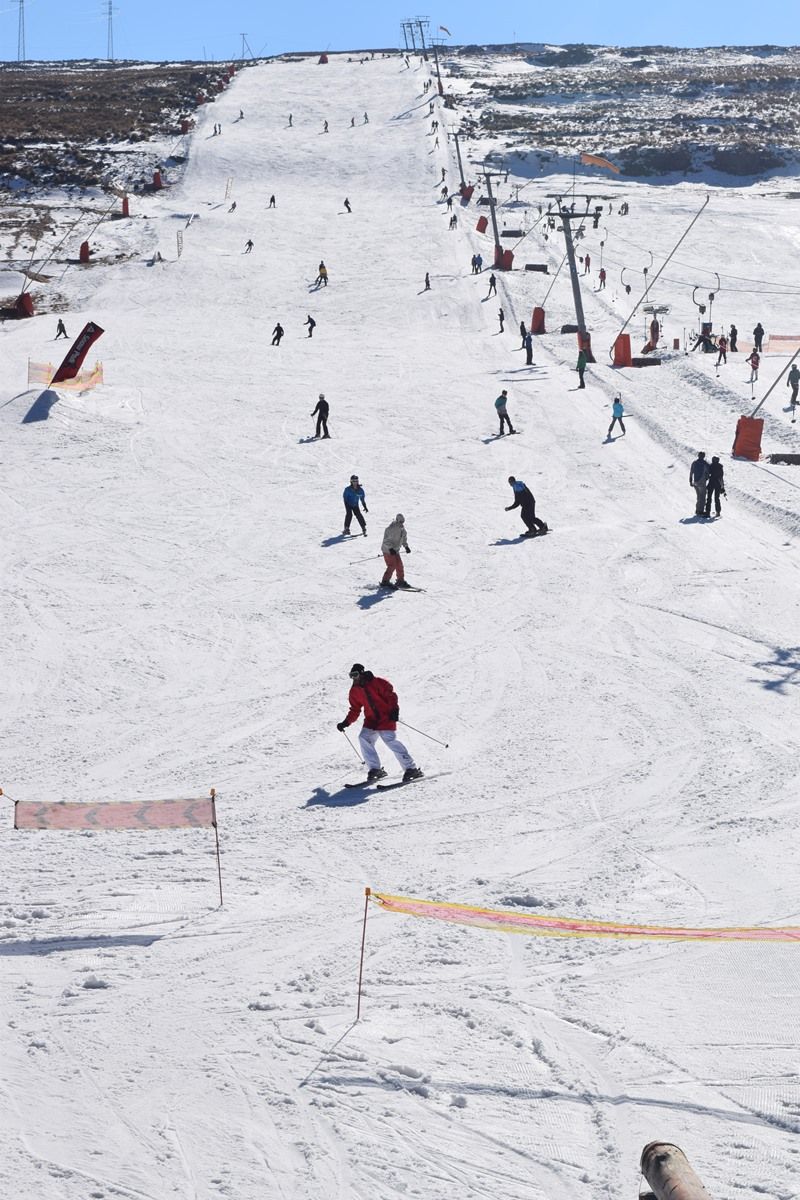
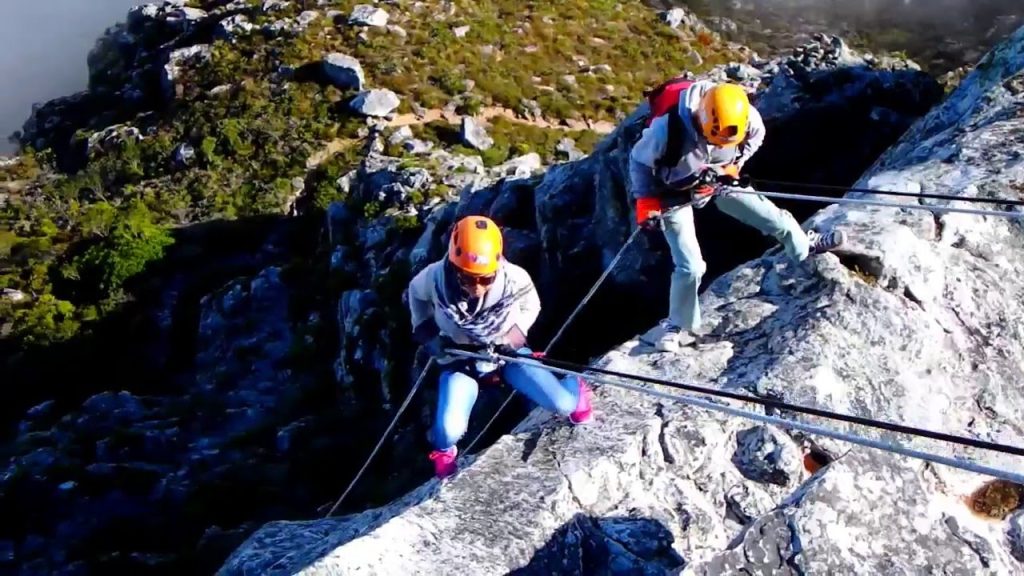
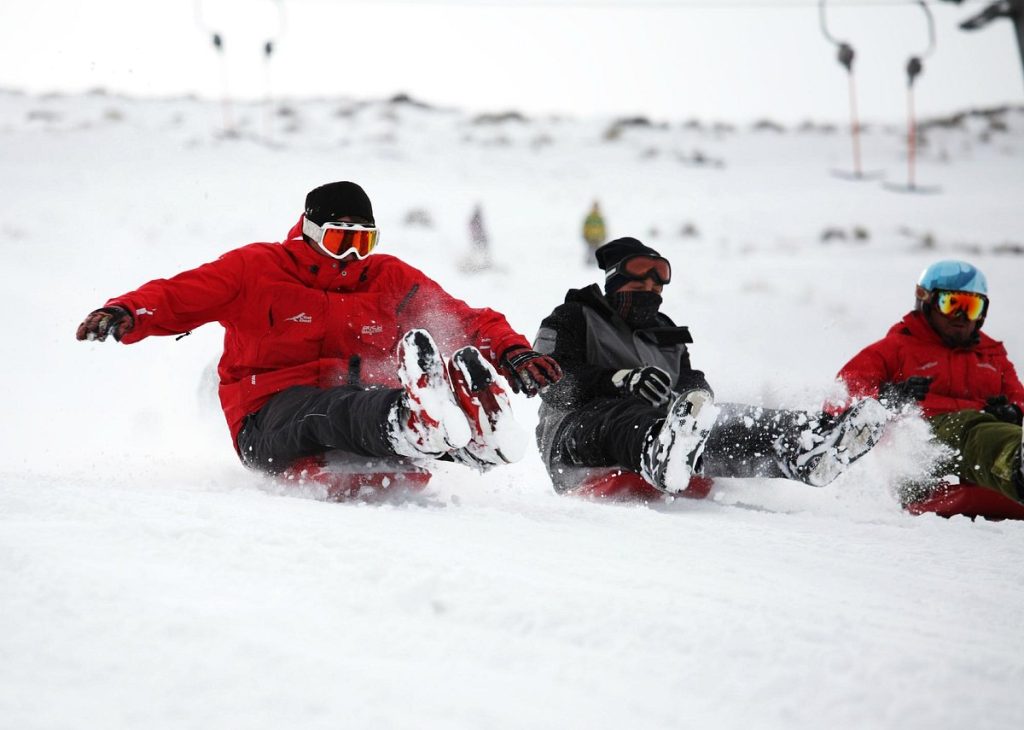
Activities for All Ages & Skills
Afri-ski caters to a broad range of winter sports enthusiasts. Skiing and snowboarding lessons are available for adults and children through its mountain ski school, with gear rentals on-site for convenience. The resort also offers family-friendly attractions such as snow tubing and bumboarding, while more advanced users enjoy freestyle features like terrain parks and carving clinics. With regular national FIS competitions hosted here, the resort strikes a balance between beginner-friendly amenities and high-performance terrain.

Facilities & Summit Experience
Afri-ski caters to a broad range of winter sports enthusiasts. Skiing and snowboarding lessons are available for adults and children through its mountain ski school, with gear rentals on-site for convenience. The resort also offers family-friendly attractions such as snow tubing and bumboarding, while more advanced users enjoy freestyle features like terrain parks and carving clinics. With regular national FIS competitions hosted here, the resort strikes a balance between beginner-friendly amenities and high-performance terrain.

Facilities & Summit Experience
Afri-ski provides a full winter experience with on-site chalet-style accommodation for around 350 guests, as well as a lifted Sky Restaurant—reported as one of the highest eateries in Africa—offering scenic vistas and warming meals. Other resort features include the Pudi Children’s Club, ski school sessions for all levels, and options for gear storage and multi-day ski passes. Located just 4–5 hours from Johannesburg (via Moteng and Mahlasela passes), the resort is both accessible and remote—a unique getaway from city life.

Preparing for the Chill & Climate
Expect daytime slopeside temperatures ranging from -2 °C to +4 °C, with nights well below freezing and occasional fresh snowfalls mid-July. Visitors should pack warm, layered clothing, waterproof outerwear, and sun protection, since the high-altitude sun can be strong. Although snowfall is unpredictable, the resort’s snow-making capabilities and weather resilience create a “snow assured” environment for families and advanced winter sports enthusiasts alike.

Booking & Contact – Afri-ski Mountain Resort
Plan your winter adventure at Lesotho’s only ski resort by reaching out directly to Afri-ski’s reservations team:
- Phone Reservations: +266 595 44 734 (Lesotho) / 0861 237 475 (South Africa)
- Email Bookings: bookings@afri-ski.net / info@afri-ski.africa
- Operating Hours: Mon–Fri: 6:00 AM–10:00 PM, Sat: 8:00 AM–12:00 PM
- Resort Reception: Daily from 6:00 AM to 10:00 PM
Visitors can also book directly online via the Afri-ski website, where you can reserve ski packages, gear rentals, lessons, and accommodation in one convenient step. Availability is generally highest during the winter season (June–August), and pre-booking is strongly recommended due to limited capacity and seasonal demand.
Natural Wonders
Maletsunyane Falls Semongkong: One of the tallest single-drop waterfalls in the Southern Hemisphere.
Nestled near the town of Semongkong, approximately 125 km (78 miles) southeast of Maseru, Maletsunyane Falls is one of Lesotho’s most breathtaking natural wonders. With a staggering drop of 192 meters (630 feet), it is among the tallest single-drop waterfalls in the Southern Hemisphere. The falls cascade into a dramatic gorge surrounded by rugged cliffs and lush landscapes, creating a spectacular sight that leaves visitors in awe. The area’s unspoiled beauty, coupled with the thunderous sound of the cascading water, offers a serene yet exhilarating experience.
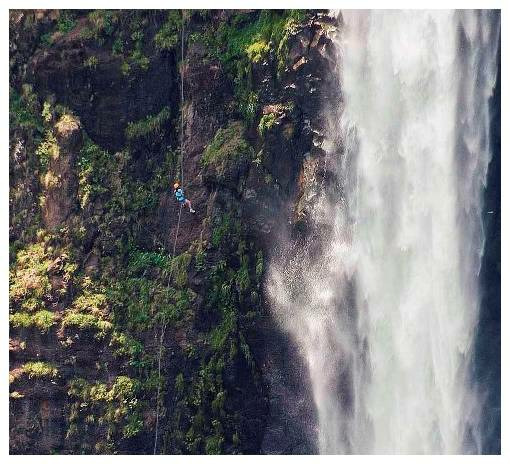
Maletsunyane Falls is also an adventurer’s paradise. It holds the Guinness World Record for the highest commercially operated abseil at 204 meters (669 feet), attracting thrill-seekers from around the world. The surrounding area provides plenty of activities, including hiking, pony trekking, and fishing in the nearby Maletsunyane River. For those seeking a deeper connection to nature, Semongkong Lodge offers rustic accommodations and guided tours, making it the perfect base to explore this iconic landmark. Maletsunyane Falls is more than just a waterfall; it’s a symbol of Lesotho’s raw natural beauty and a must-visit destination for any traveller.
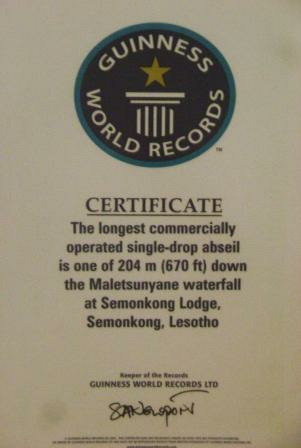

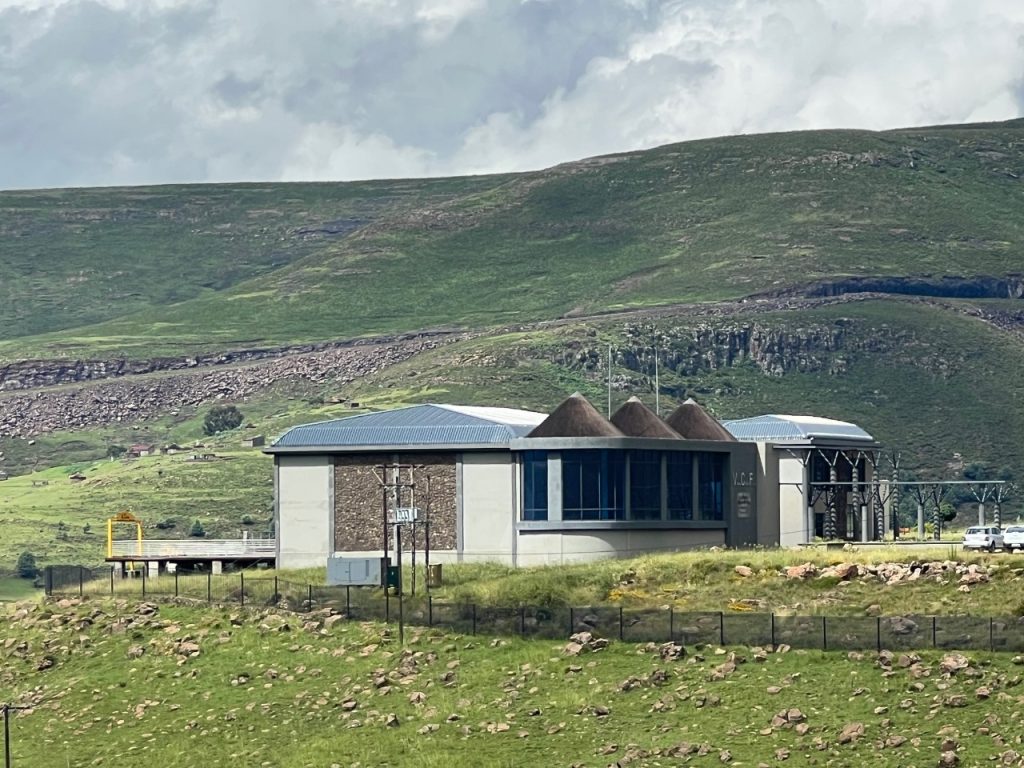
Kome Caves: Ancient cave dwellings still inhabited by descendants of the Basia clan.
The Kome Caves, located approximately 70 km (43 miles) east of Maseru in the Berea District, are one of Lesotho’s most remarkable cultural and historical landmarks. These ancient cave dwellings were carved into soft sandstone in the early 19th century by the Basia clan, who sought refuge from tribal conflicts and marauding cannibals. Remarkably, the caves have been continuously inhabited by the descendants of the original settlers, preserving a living connection to Lesotho’s past. The unique architecture, with its domed stone enclosures, blends seamlessly into the surrounding landscape, creating a stunning visual spectacle.
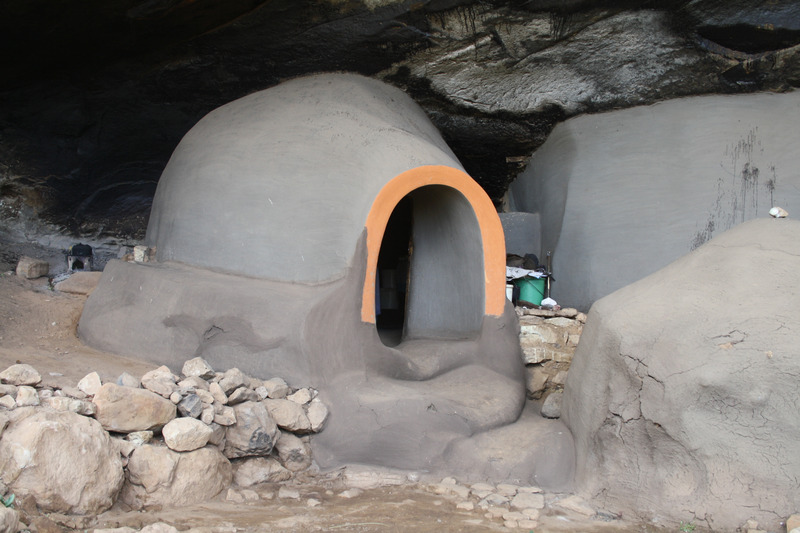
Visitors to the Kome Caves can explore the interiors of these traditional homes and learn about the fascinating history and traditions of the Basotho people. Guided tours provide insights into the resourcefulness and ingenuity of the inhabitants who adapted to this rugged environment for survival. The area also offers picturesque views of the surrounding mountains and valleys, making it a serene and educational destination. The Kome Caves stand as a testament to the resilience of the Basotho people and offer a unique glimpse into Lesotho’s rich cultural heritage.
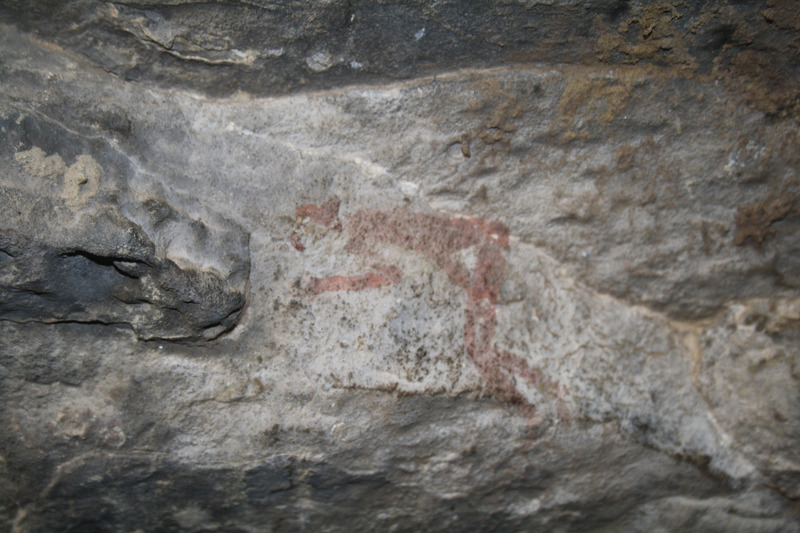
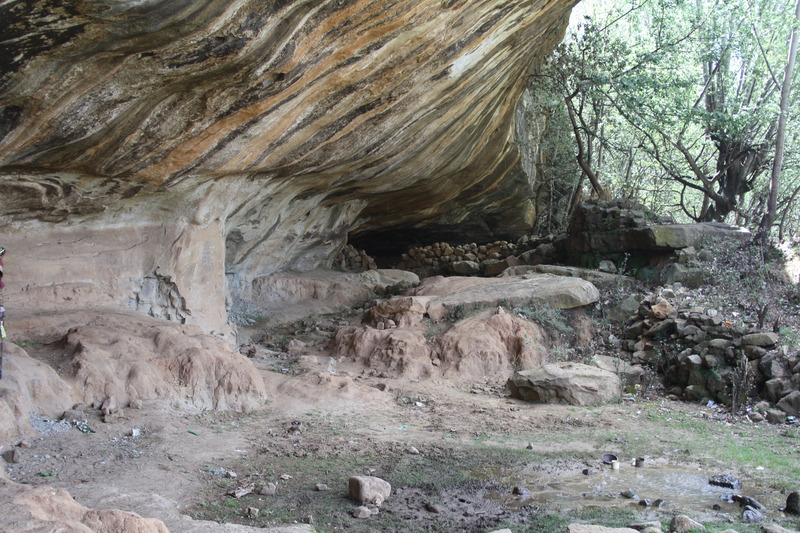
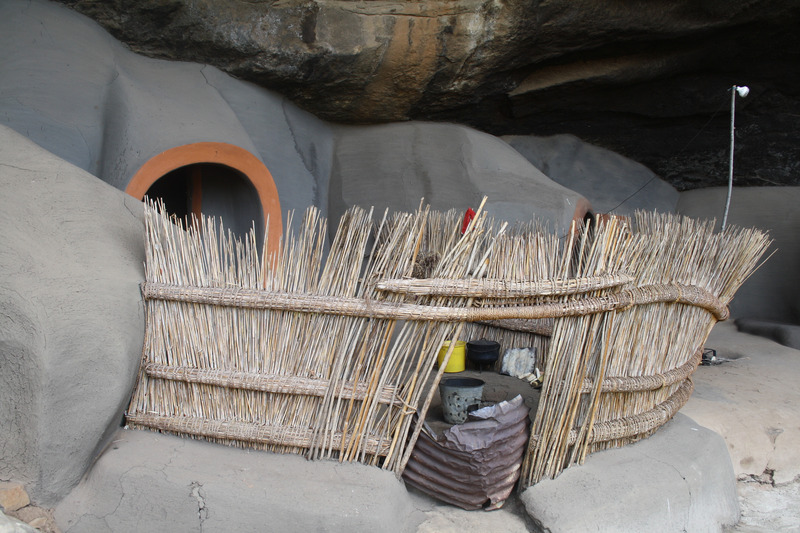
Dinosaur Footprints: Preserved tracks in Quthing that date back over 200 million years.
Lesotho is home to some of the best-preserved dinosaur footprints in the world, offering a fascinating glimpse into the prehistoric era. These fossilized tracks, dating back over 200 million years to the Jurassic period, are a testament to the region’s rich geological history. The footprints are primarily found in the Quthing District, with the most famous site located in Moyeni, about 160 km (99 miles) south of Maseru. These tracks, left behind by ancient creatures such as theropods and prosauropods, are among the most significant paleontological discoveries in Southern Africa.
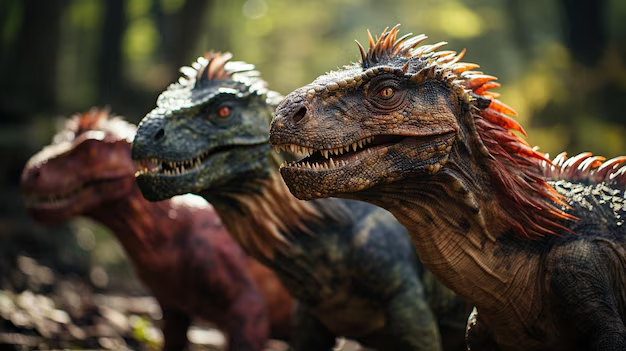
The Moyeni site is easily accessible and offers visitors the chance to walk alongside these ancient trails, imagining a time when dinosaurs roamed the highlands of Lesotho. Other locations, such as the Matsieng area, also feature smaller collections of footprints, giving visitors multiple opportunities to explore this fascinating aspect of the country’s history. Guided tours at these sites provide valuable context, explaining how the tracks were formed and preserved in Lesotho’s sandstone landscapes.
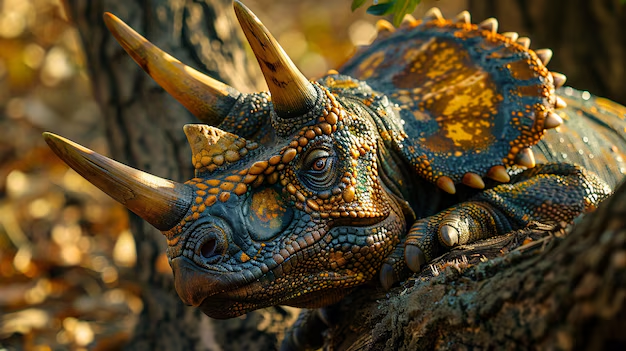
For science enthusiasts and curious travelers alike, the dinosaur footprints are a must-see attraction. They not only highlight Lesotho’s unique natural history but also offer a sense of awe and wonder at the ancient life that once inhabited this region. Combining scientific significance with stunning scenery, these sites are an essential part of any visit to the Kingdom in the Sky.
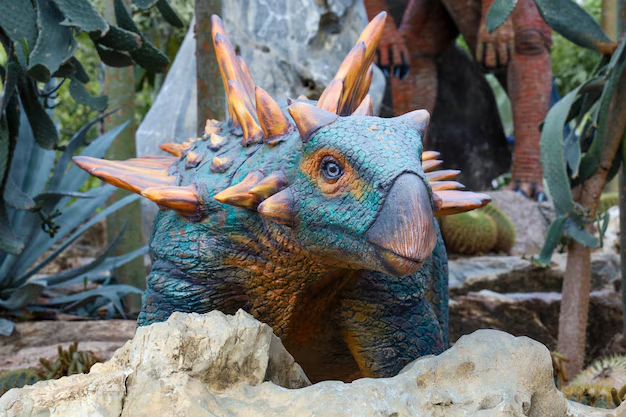
Dinosaur Footprints and Bushmens' Paintings
Dinosaur Footprints
Just outside Quthing, near Moyeni Camp and Ellenberger’s Cave House, visitors can explore impressive fossilized dinosaur footprints – belonging to the early Jurassic ornithischian Lesothosaurus, whose name means “lizard from Lesotho”. These three‑toed imprints, preserved in sedimentary sandstone, are exceptionally well preserved and accessible via short paths from Quthing town. The site features visitor signage explaining the dinosaur’s significance – and offers a vivid link to Lesotho’s prehistoric past set amid scenic rural terrain.
Lesothosaurus was a small, fast‑running herbivore or opportunistic omnivore from approximately 190–200 million years ago, based on fossils found globally but first identified in Lesotho. Seeing its tracks firsthand – etched into the same rocks where it once roamed – offers a powerful sense of scale and geologic time. The Moyeni Camp footprint site is open daily, generally from morning until late afternoon, and makes a fascinating stop for families and enthusiastic travelers alike.
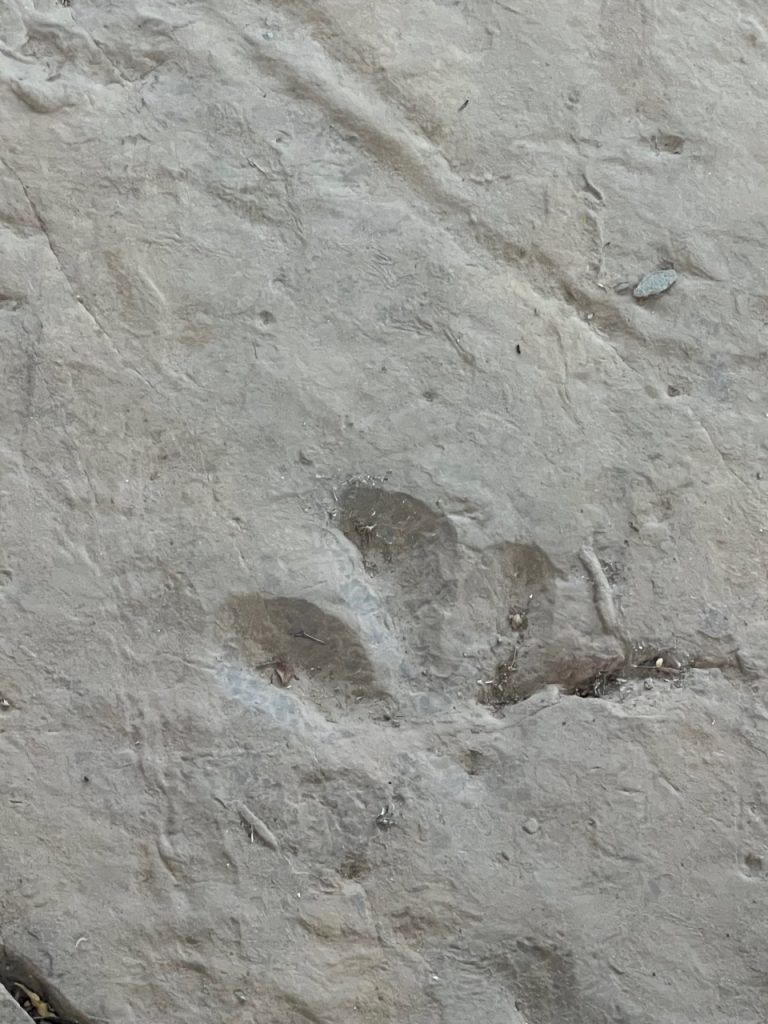
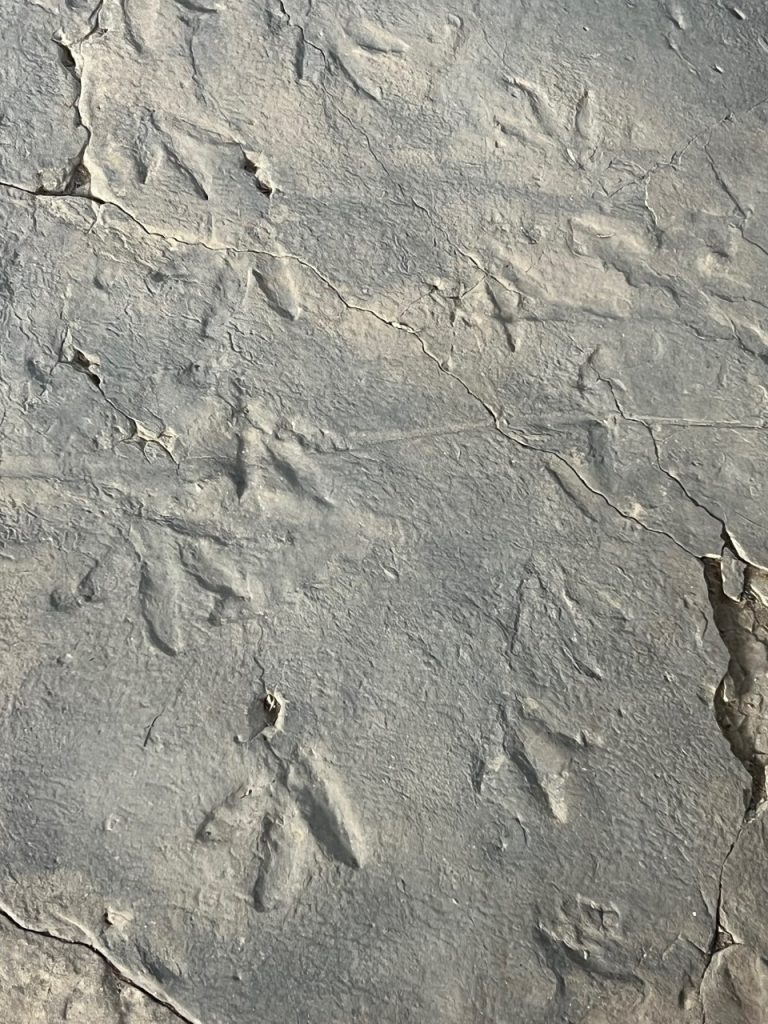
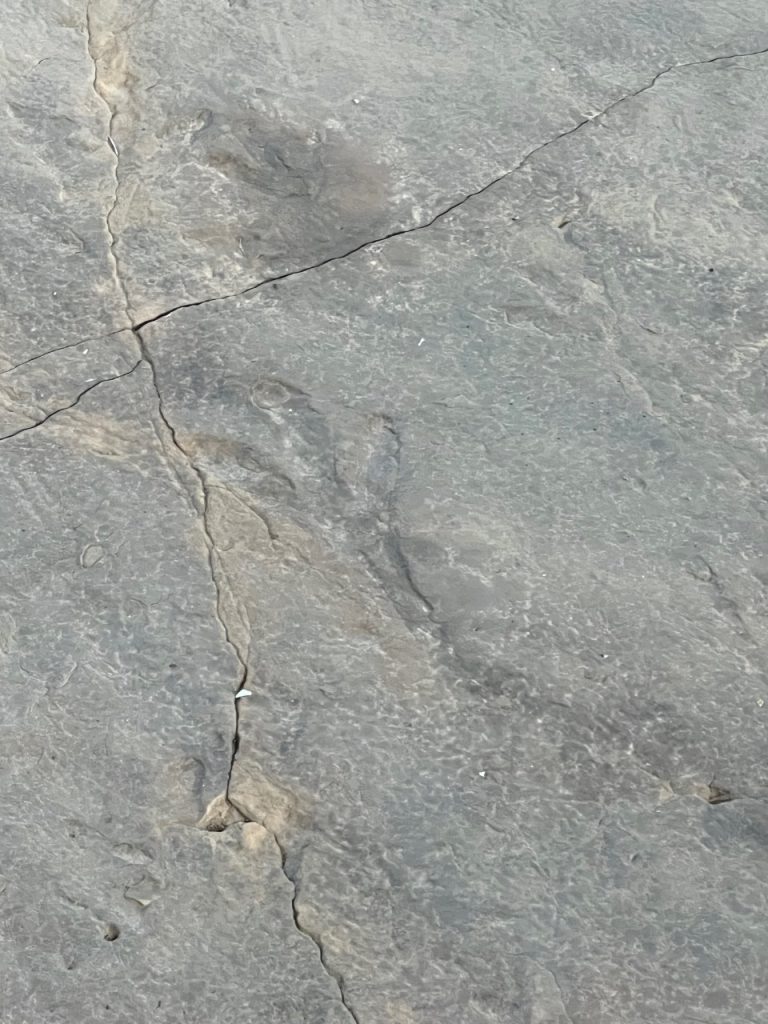
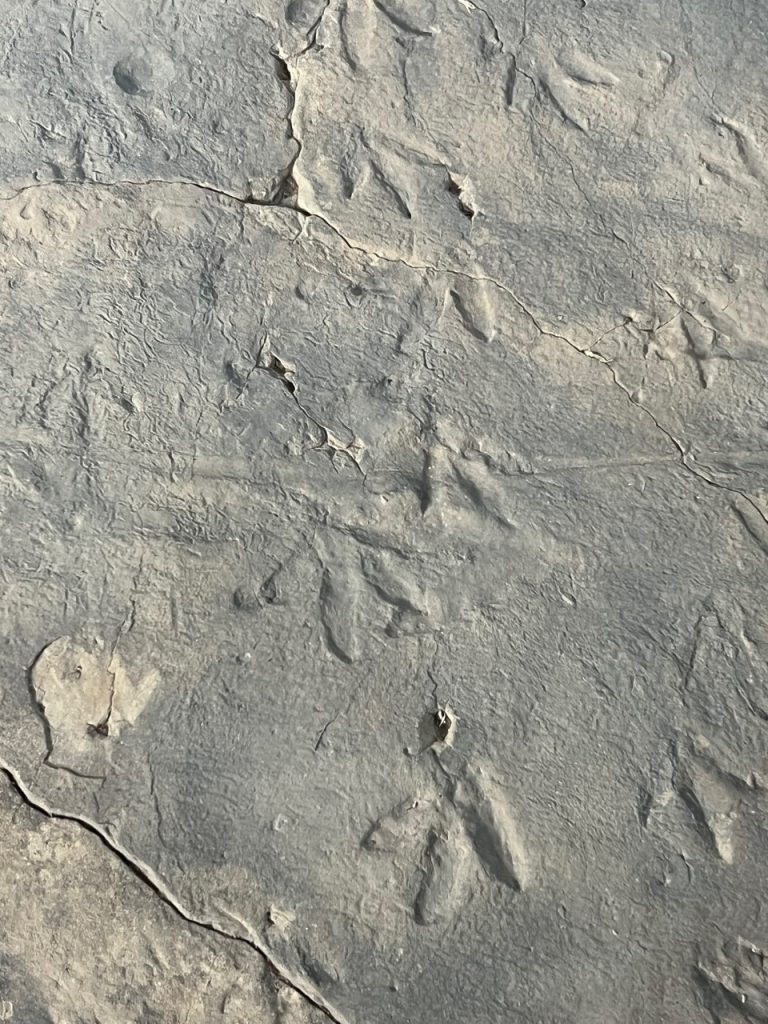
Bushmens' Paintings
Deep within Sehlabathebe National Park in Qacha’s Nek District, visitors can discover a rich collection of San (Bushmen) rock paintings, part of the largest concentration of such art in southern Africa. At least 65 rock art sites have been documented within the park, including a striking one‑metre‑long panel depicting a ritual specialist—perhaps a shaman—with symbolic motifs like an exaggerated body and clawed toes, believed to represent spiritual beliefs about abundance and power.
These paintings – created using ochre, animal fat, and charcoal – feature detailed images of humans, eland antelope, mythic figures, and trance dancers, illustrating the lives and beliefs of the San people over millennia. Visiting these sacred rock shelters offers both cultural insight and admiration of exquisitely preserved art set against the park’s rugged sandstone cliffs, waterfalls, and alpine landscapes.
